#paris museums price comparison
Explore tagged Tumblr posts
Text
Get Your Money's Worth: Comparing Prices with the Paris Museum Pass
If you’re going to Paris, then look no further than this post for your value tips on how to get the most out of your money in the City of Light. You love history, culture, the arts, and the architecture. Maybe you’ve heard about the Paris Museum Pass and are considering the 2, 4, or 6 day pass. Is it worth the money? I’ve been to Paris five times and bought the pass for three of those visits and…

View On WordPress
#doing paris on a budget#how to save money in paris#museums in paris#paris france#paris museum pass#paris museums price comparison
0 notes
Text
Sunrise to Sunset à Montmartre: underrated Paris art destinations
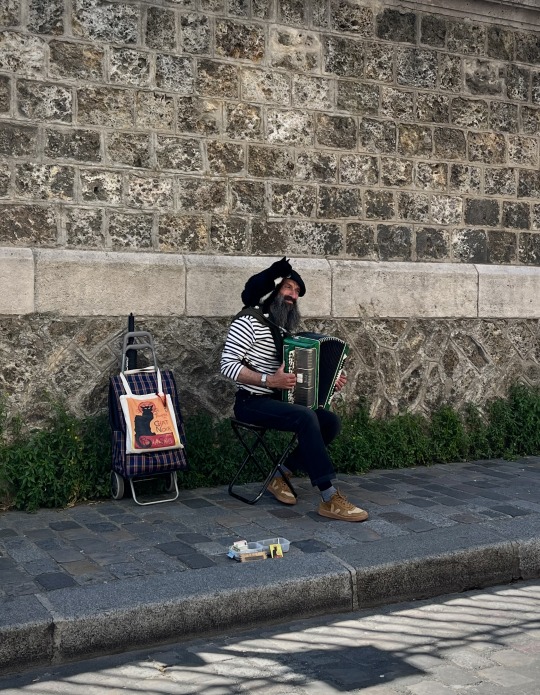
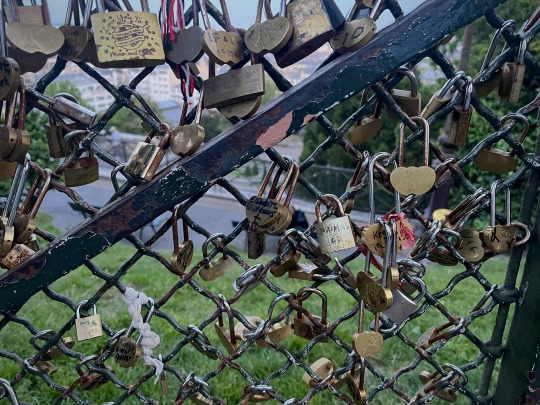
Paris is known for some of the world’s most fabulous art destinations, and my second week in the city certainly paid homage to the fact.
My friends and I started off the week with a visit to the Louvre following Monday’s class. Prior to coming to the museum, I hadn’t realized just how vast it truly was: the Louvre holds over 35,000 works of art, representing 5 out of 7 continents and over 25 centuries’ worth of human creativity. Another thing I hadn’t realized was that there would be a line just to see the Mona Lisa up close(?????). Tired after having seen so much art, my friends and I opted out of this wait on Monday and chose to instead revisit Friday morning. Thanks to the existence of our study abroad students IDs, visiting the museum both times was free, so I did not mind returning solely to see the Mona Lisa.

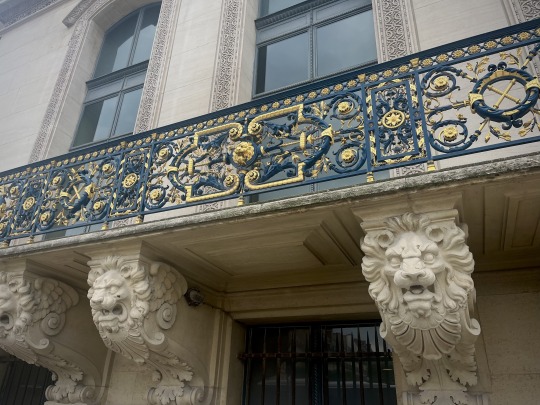
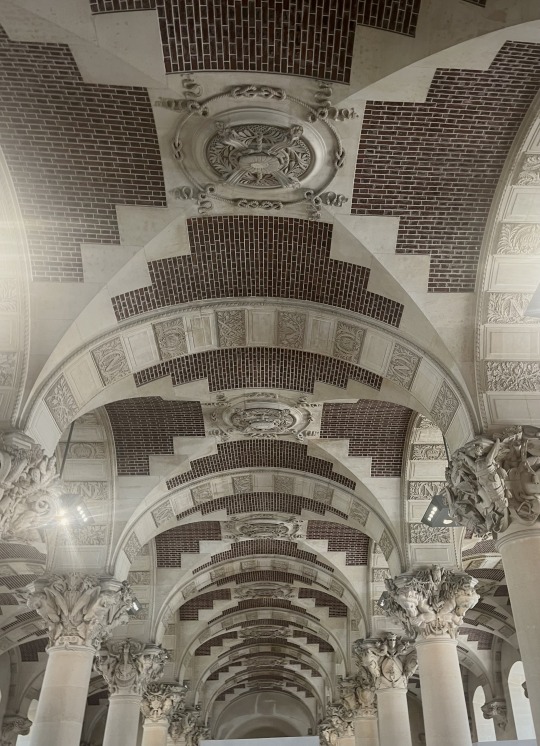
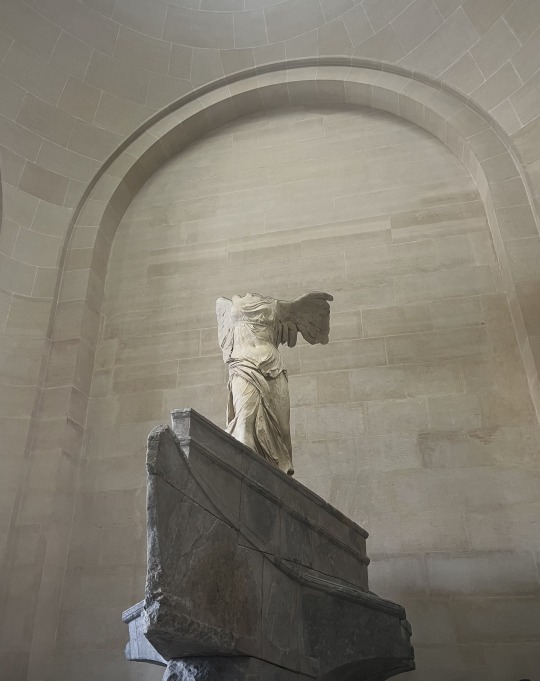
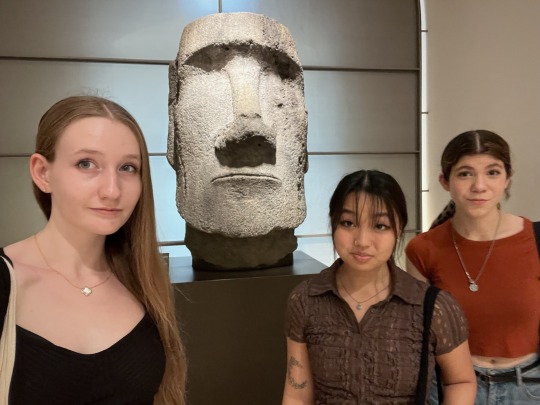
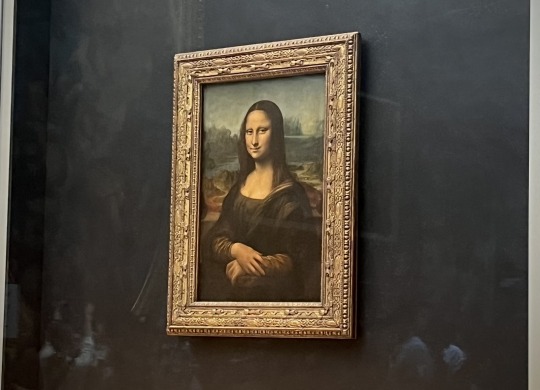
Tuesday, we continued the week’s ‘art’ theme by visiting the Musée d’Orsay, Paris’ train-station-turned-impressionist-museum. This museum houses Claude Monet’s Water Lilies as well as several other notable works from the Impressionist, Neo-Impressionist, and Post-Impressionist eras. I enjoyed the more focused perspective this museum provided in comparison to that of the Louvre and found the stylistic changes from era to era interesting to observe.

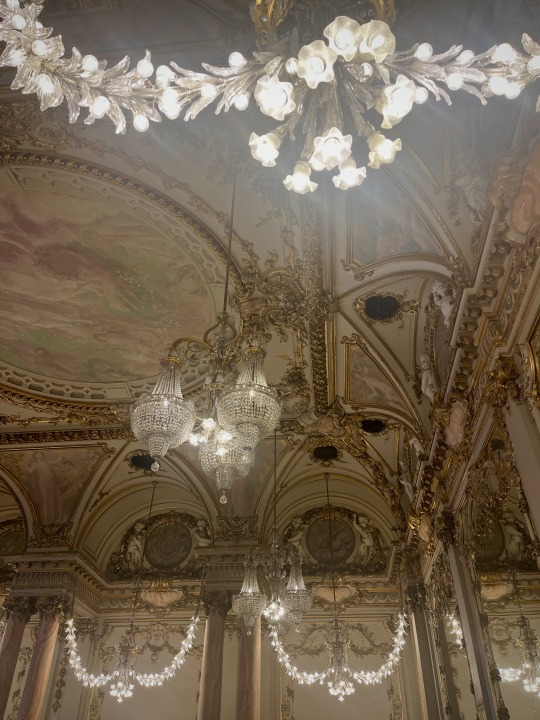
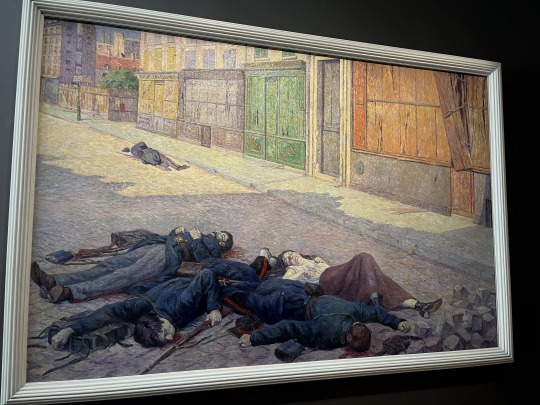
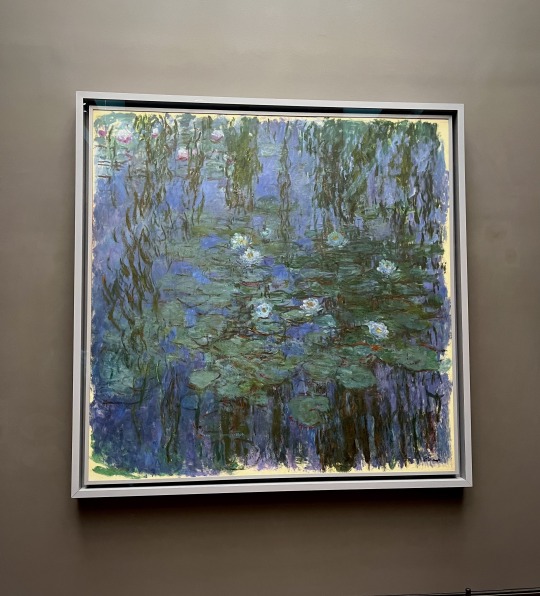
My favorite thing I did this week, however, was not found within the walls of any of Paris’ art museums, but in the heart of one of its most vibrant villages: Montmartre. Montmartre is located in Paris’ 18th arrondissement and most famously houses the Sacré Cœur. In addition to the allure of its beautiful basilica, the atmosphere of Montmartre is unlike that of any other part of Paris. The artists’ quarter of the city, there is no shortage of street artists selling their work or drawing portraits as souvenirs, all while live music from neighboring restaurants fills the air. In the past week I visited Montmartre 3 times, all at different times of day, and found each to be enjoyable. The environment is always lively, and its restaurants and shops seem to be open for longer than those of anywhere else.

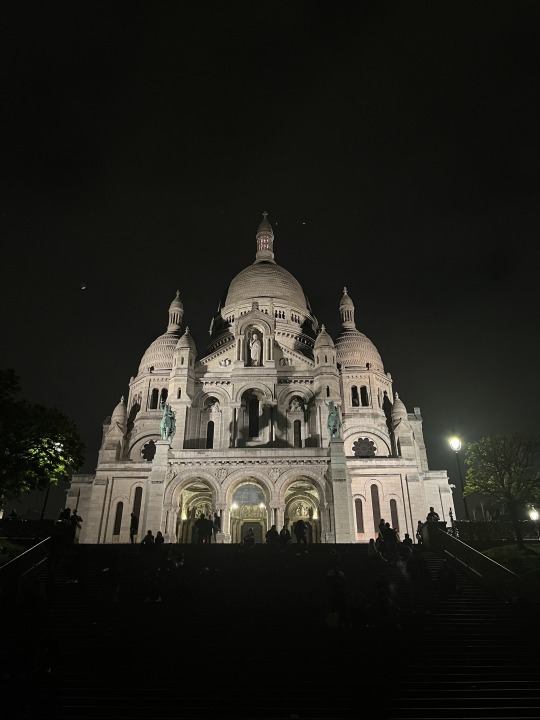
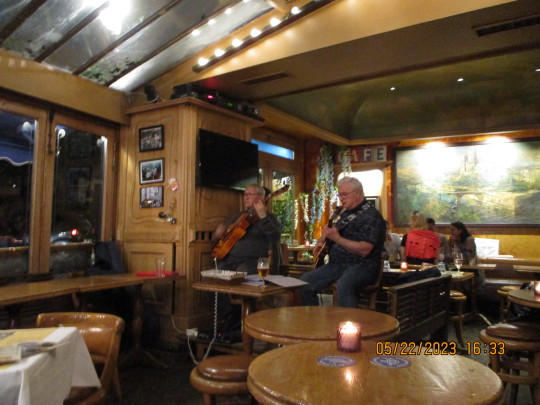
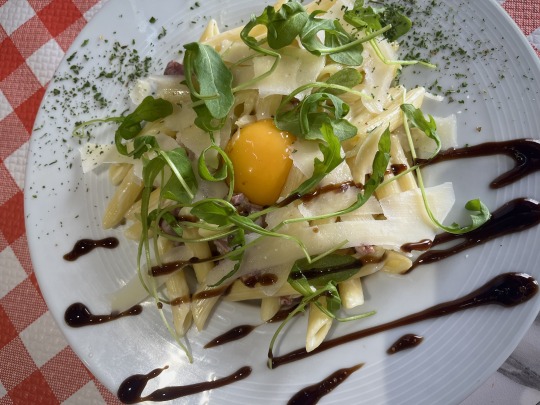
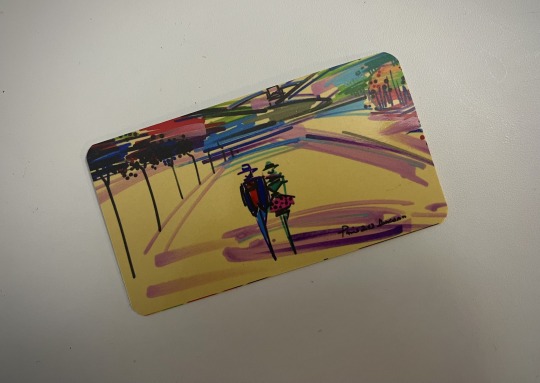
Another of the village’s assets I’d like to highlight is its city view. As indicated by the “mont” in its name, Montmartre is an elevated hill providing a breathtaking look at the city below. My roommate and I took our first visit to Montmartre at sunset, where we observed the city all lit up at night. We enjoyed this so much that we (willingly!!) woke up at 4:45 a.m. this Saturday to see the view once more, this time at sunrise.
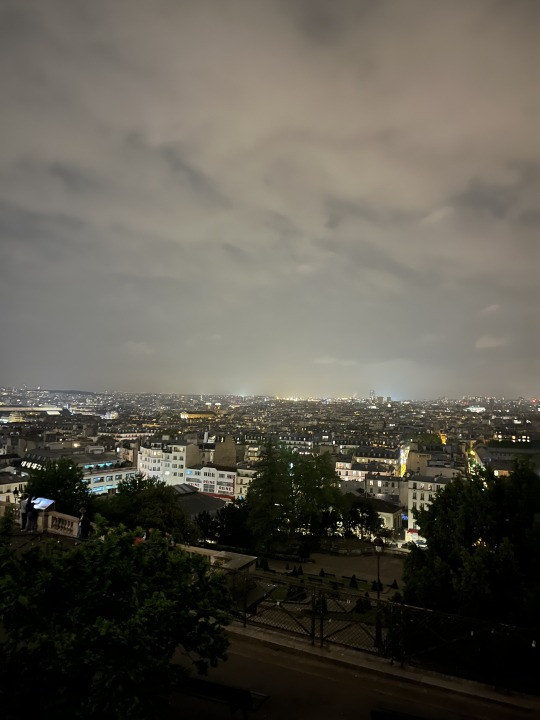
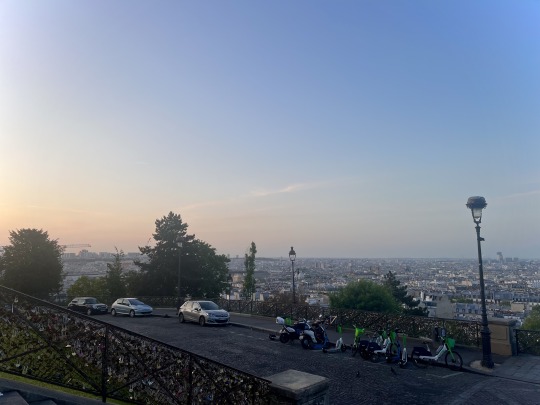
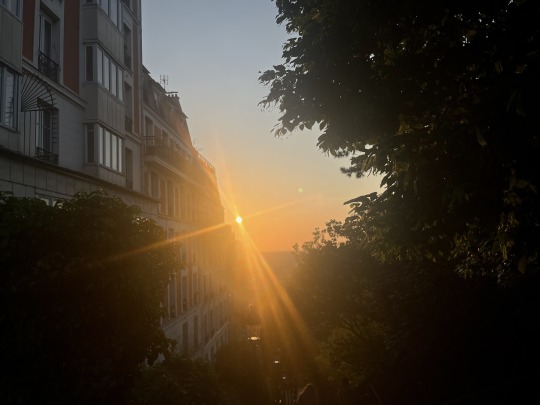
Montmartre is just one example of the many underrated art stops outside of Paris’ most touristy ones. Today, my roommate and I visited another of its lesser-known stops, Petit Palais. This fine arts museum holds art from the reigns of several of the king ‘Louis’s, in addition to numerous sculptures and religious works. Unlike that of the Louvre or Musée d’Orsay, the line to enter was short and it took less than 5 minutes to get in. Additionally, entry is free for all visitors, another perk.
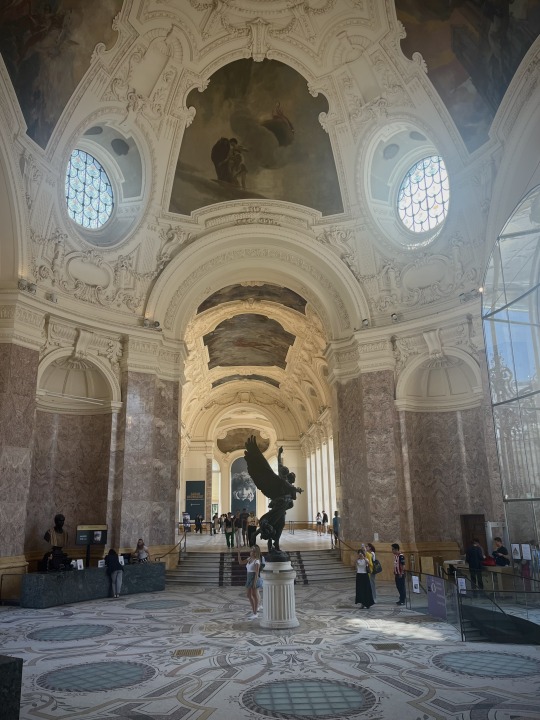

After appreciating its artwork, we made our way to the museum’s garden area. The weather today was beautiful, sunny and perfect for appreciating the ornate building and its landscape. We also enjoyed some drinks and pastries from its café/restaurant, which I'm sure we'll be revisiting to take advantage of its meal combo deals (entrée + dessert for a very reasonable price) and outdoor seating.
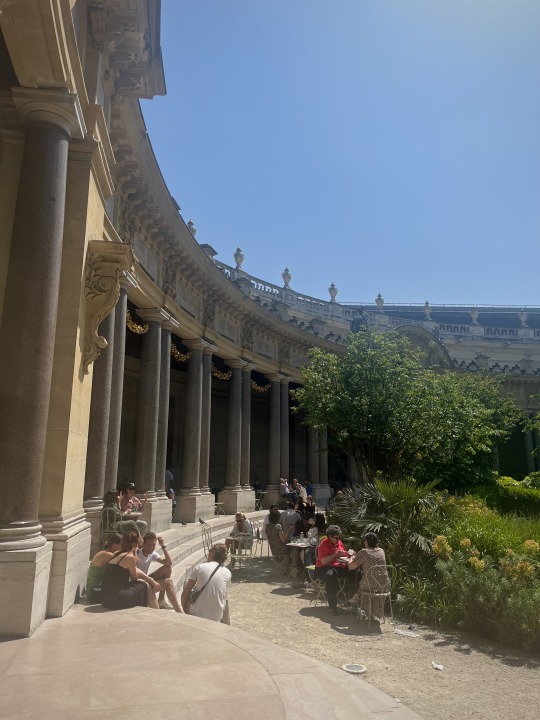
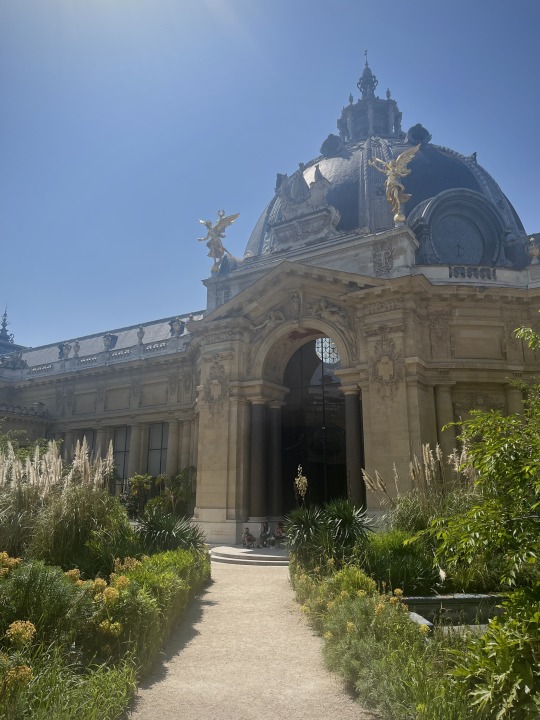
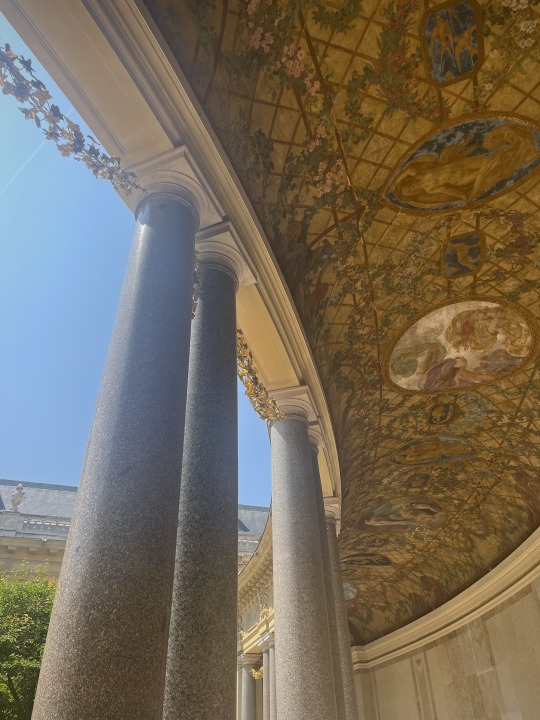
Some other inspiring stops from the week:
-Walking and enjoying the stalls along the Seine, where you can find a variety of posters, pins, and other unique souvenirs
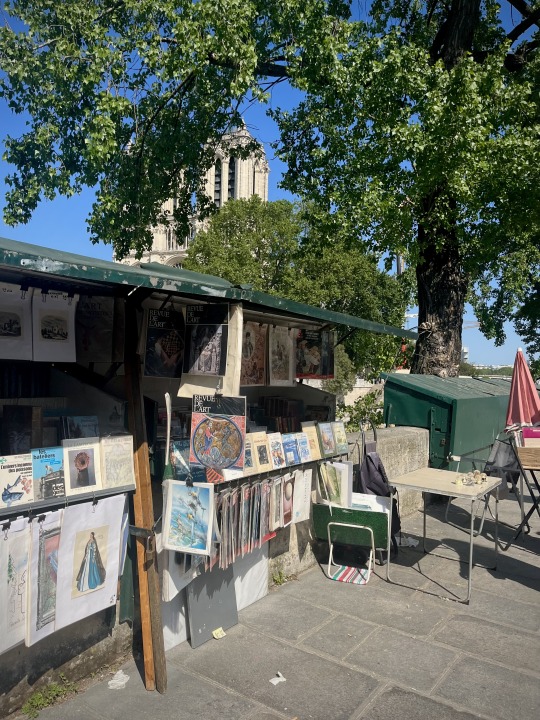
-A trip to une brocante, a flea market, near the métro Bastille, where I found some cool vintage jewelry
(For anyone studying in the area who may be interested, a TikTok user I follow suggested this website to locate upcoming brocantes: Brocante et vide-grenier Paris (75000) - Brocabrac)
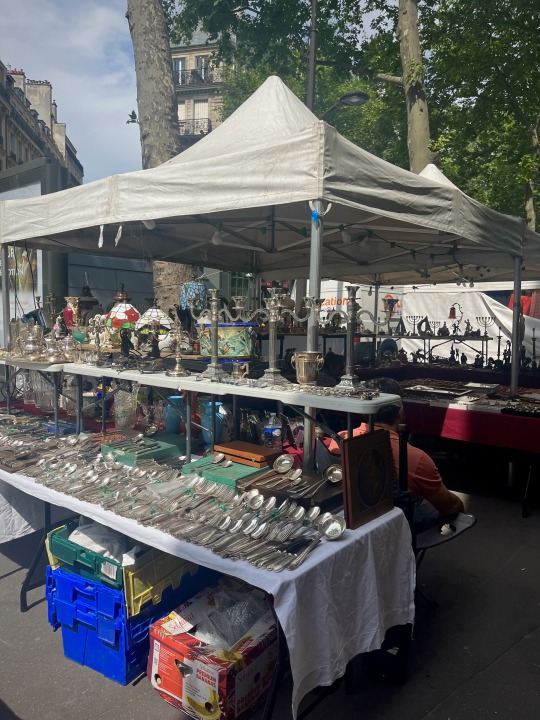
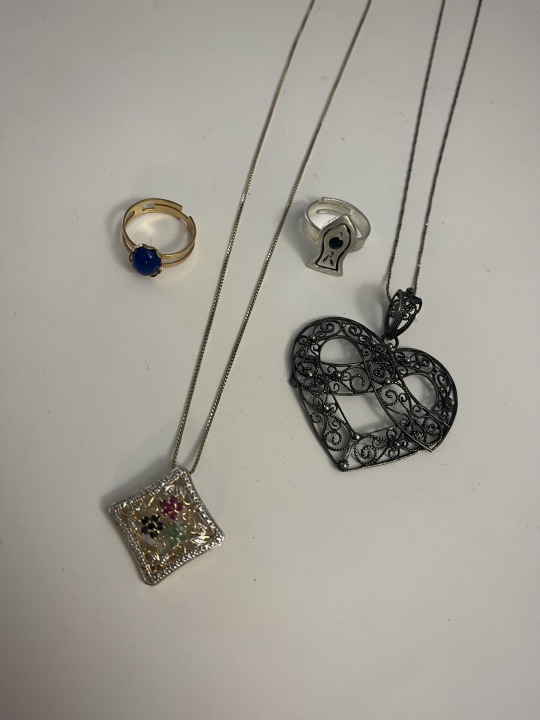
-Brazilian coffee at Brigadeiro d’Alis, a South American-style coffeeshop on our way to class
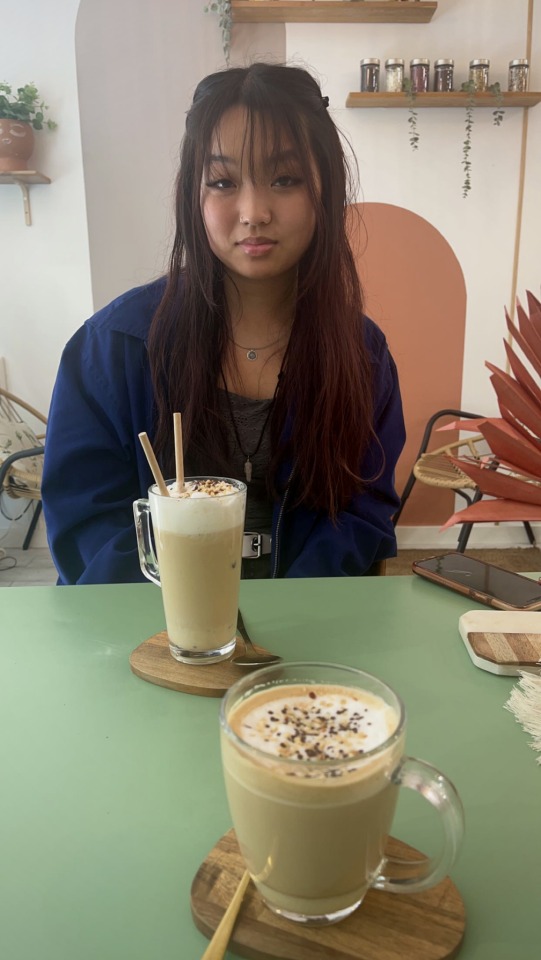
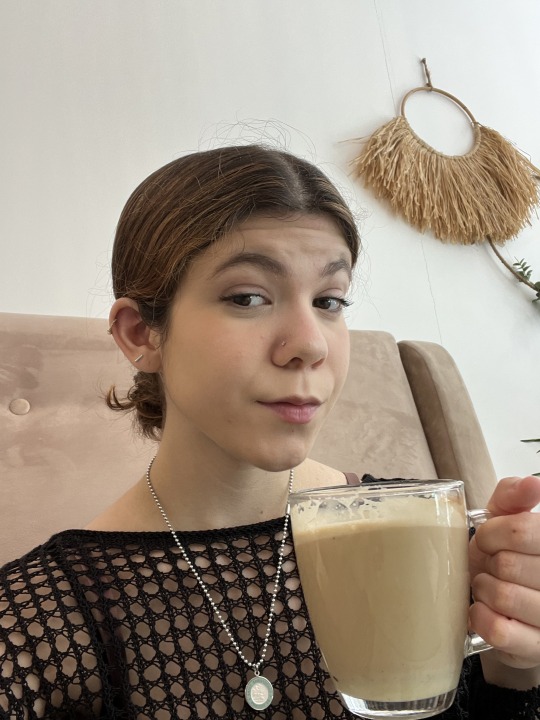
All in all, as I’ve started to run out of the more “touristy” things to do in Paris, I’m enjoying becoming more creative and present in my daily planning. Paris is far from boring, and I’m finding that there’s so much more to do and see than its most popular attractions. I can’t wait to see where this mindset takes me in the weeks to come!
As for classes, my second class starts tomorrow, so wish me luck and expect an update next week!
À bientôt !!
Hannah Bernardi
First-year Engineering
Engineering in Paris, France
2 notes
·
View notes
Text
Best Times to Book Flights to the USA

The United States is a dream destination for many travelers, offering a variety of experiences from iconic cities to stunning natural landscapes. Finding affordable flights to the USA can make your trip even more enjoyable. This guide provides practical tips, tools, and advice to help you book the best deals on flights to the USA.
Why Visit the USA?
The USA is a diverse and vibrant country with something for everyone:
Iconic Cities: Explore New York City, Los Angeles, Chicago, and Miami.
Natural Wonders: Visit the Grand Canyon, Yellowstone National Park, and the Great Smoky Mountains.
Cultural Experiences: Discover world-class museums, historic landmarks, and cultural festivals.
Best Times to Book Flights to the USA
1. Plan Ahead
Booking flights 2–6 months in advance often yields the best deals. Airlines frequently offer promotional fares for early planners.
2. Avoid Peak Seasons
Airfare to the USA tends to spike during:
Summer (June to August)
Thanksgiving (late November)
Christmas and New Year’s (late December to early January)
Travel during shoulder seasons, such as spring (April-May) and fall (September-October), for lower prices.
3. Midweek Savings
Flights departing on Tuesdays, Wednesdays, or Saturdays are typically cheaper than those on Fridays or Sundays.
Tools and Platforms for Finding Cheap Flights to the USA
1. Flight Comparison Websites
Use these reliable platforms to compare fares:
Google Flights: Offers a user-friendly interface and price-tracking features.
Skyscanner: Allows flexible date searches and multi-city itineraries.
Momondo: Great for discovering budget airlines and hidden deals.
2. Airline Websites and Apps
Check airlines’ official websites for exclusive promotions and direct booking discounts. Popular carriers to the USA include:
Delta Airlines
copyright
United Airlines
British Airways (for flights from Europe)
3. Fare Alerts and Subscription Services
Sign up for fare alerts on platforms like Kayak, Hopper, or Airfarewatchdog. Subscription services like Scott’s Cheap Flights also provide curated deals for flights to the USA.
Tips for Scoring Affordable Flights to the USA
1. Be Flexible with Dates and Airports
Use tools like Skyscanner’s “Cheapest Month” feature to identify the most affordable travel dates.
Consider flying into secondary airports, such as Newark (instead of JFK) or Oakland (instead of SFO).
2. Opt for Budget Airlines
Carriers like Norwegian Air, JetBlue, and Southwest Airlines often provide lower fares for flights to and within the USA.
3. Book Connecting Flights
Direct flights are convenient but often more expensive. Opt for flights with layovers to save money.
4. Leverage Loyalty Programs
Enroll in frequent flyer programs like Delta SkyMiles or copyright AAdvantage to accumulate miles for discounted or free tickets.
Avoiding Common Pitfalls
1. Hidden Fees
Budget airlines may charge for extras like baggage, seat selection, and onboard meals. Read the fine print to avoid unexpected costs.
2. Visa Requirements
Ensure you have the necessary travel documentation, such as an ESTA (Electronic System for Travel Authorization) for eligible travelers.
3. Travel Insurance
Protect your trip with comprehensive travel insurance that covers cancellations, delays, and medical emergencies.
Regional Insights for Flights to the USA
1. From Europe
Popular gateways include London, Paris, Frankfurt, and Amsterdam.
Look for competitive fares from airlines like Virgin Atlantic, Lufthansa, and Air France.
2. From Asia
Major hubs include Tokyo, Singapore, and Hong Kong.
Airlines like Singapore Airlines, ANA, and Cathay Pacific frequently offer deals.
3. From Latin America
Cities like Mexico City, Bogotá, and São Paulo offer regular flights to the USA.
Airlines such as LATAM, Avianca, and Aeroméxico are top choices.
4. From Oceania
Flights from Sydney, Auckland, and Melbourne often connect through Los Angeles or Honolulu.
Carriers like Qantas, Air New Zealand, and copyright frequently run promotions.
Making the Most of Your Trip to the USA
1. Domestic Travel Deals
Once in the USA, take advantage of budget airlines like Southwest, Spirit, and Frontier for domestic travel. Train services like Amtrak and buses such as Greyhound also provide affordable options.
2. Explore Beyond the Cities
Rent a car to explore the scenic beauty of national parks and small towns.
Enjoy regional cuisines and cultural experiences across different states.
Conclusion
Booking flights to the USA doesn’t have to be expensive. By planning ahead, using the right tools, and staying flexible, you can secure affordable airfare and enjoy all that this incredible destination has to offer. Start your journey today and create unforgettable memories in the land of opportunity!
0 notes
Text
How to Book Flights for an Art Tour
Book cheap flight tickets and hotels- https://trailtravelz.com/
Planning an art tour can be a thrilling adventure, whether you're exploring galleries in Paris, museums in New York, or street art in Berlin. However, before you immerse yourself in the world of art, you need to secure your flights. Here's a step-by-step guide to booking flights for an unforgettable art tour:
Research Destinations and Dates
Begin by researching the art destinations you want to visit and finalize your tour dates. Whether it's a weekend getaway or a month-long exploration, clarity on your itinerary will help you find the best flight options.
Compare Airline Options
Use flight comparison websites or apps to compare prices and flight schedules across different airlines. Look for airlines that offer direct flights or convenient connections to your art tour destinations.
Flexible Dates? Explore Options
If your travel dates are flexible, explore the option of booking flights on weekdays or during off-peak seasons. This can often result in significant savings on airfare.
Set Price Alerts
Set up price alerts on flight booking platforms to monitor price fluctuations. This allows you to book flights when prices drop, ensuring you get the best deal for your art tour.
Consider Layovers
Depending on your budget and schedule, consider flights with layovers. Sometimes, opting for a layover can reduce costs while adding an extra city to your art tour itinerary.
Check Baggage Policies
Review baggage policies of different airlines to avoid surprises at the airport. Some airlines may offer special allowances for travelers carrying art supplies or purchases.
Book Early
Once you've found the ideal flights for your art tour, don't delay booking. Prices can fluctuate, and early booking increases your chances of securing seats at competitive rates.
Finalize Travel Documents
Ensure your passport is valid and any required visas or travel permits are obtained well in advance. This prevents last-minute delays or cancellations.
Conclusion
Booking flights for an art tour involves careful planning and research to ensure a seamless travel experience. By following these steps, you can focus on exploring art and culture, knowing that your travel logistics are well taken care of.
0 notes
Text
Destination Spotlight: Flight Ticket Deals to Must-Visit Locations
Travel enthusiasts are always on the lookout for the next exciting destination to explore, and what better way to kickstart your adventure than by snagging some great deals on flight tickets? Whether you're a seasoned traveler or someone looking to embark on their first journey, finding affordable flight options can make all the difference. In this destination spotlight, we'll highlight some must-visit locations around the world and share tips on how to find the best flight ticket deals.
Book cheap flight tickets and hotels- https://cheaptravelfirst.com/
1. Paris, France
Known as the "City of Love" and home to iconic landmarks such as the Eiffel Tower and the Louvre Museum, Paris tops the list of must-visit destinations for many travelers. From romantic strolls along the Seine River to indulging in delicious pastries at quaint cafes, Paris offers something for everyone. To score great flight deals to Paris, consider booking your tickets during the offseason or keeping an eye out for flash sales from airlines.
2. Tokyo, Japan
Tokyo is a vibrant metropolis where tradition meets modernity. From the bustling streets of Shibuya to the serene gardens of Shinjuku Gyoen, Tokyo offers a unique blend of culture, technology, and culinary delights. When searching for flight ticket deals to Tokyo, flexibility with your travel dates can significantly impact your savings. Additionally, signing up for airline newsletters and following travel deal websites on social media can help you stay informed about any promotions or discounts.
3. Barcelona, Spain
With its stunning architecture, beautiful beaches, and lively nightlife, Barcelona is a dream destination for many travelers. Explore the whimsical creations of Antoni Gaudí at landmarks like Sagrada Familia and Park Güell, or simply soak up the sun at Barceloneta Beach. To find affordable flight tickets to Barcelona, consider using flight comparison websites and setting up price alerts for your desired travel dates. Being open to flying with budget airlines or making use of layovers can also help you secure cheaper fares.
4. Bangkok, Thailand
A vibrant city known for its bustling street markets, ornate temples, and delectable street food, Bangkok is a sensory delight for travelers. Whether you're exploring the historic district of Rattanakosin or cruising along the Chao Phraya River, Bangkok offers endless opportunities for adventure. To find flight ticket deals to Bangkok, consider booking well in advance or taking advantage of last-minute deals. Additionally, being flexible with your departure airport and travel dates can help you find the best prices.
5. New York City, USA
The Big Apple needs no introduction – from Times Square and Central Park to the Statue of Liberty and Broadway, New York City is a melting pot of culture, art, and entertainment. Whether you're catching a Broadway show, exploring world-class museums, or indulging in diverse culinary experiences, New York City offers something for every traveler. To score great flight deals to NYC, consider flying during the offseason or opting for midweek travel when fares are typically lower. Additionally, booking your tickets well in advance or being open to alternative airports can help you find budget-friendly options.
Conclusion
Finding affordable flight tickets to must-visit locations around the world doesn't have to be a daunting task. By staying flexible with your travel dates, utilizing flight comparison tools, and keeping an eye out for promotions and discounts, you can embark on your dream adventure without breaking the bank. So pack your bags, explore these incredible destinations, and make memories that will last a lifetime!
#FlightDeals#TravelTips#DestinationSpotlight#BudgetTravel#FlightDiscounts#TravelDeals#MustVisitLocations
0 notes
Text
Destination Spotlight: Flight Ticket Deals to Must-Visit Locations
Travel enthusiasts are always on the lookout for the next exciting destination to explore, and what better way to kickstart your adventure than by snagging some great deals on flight tickets? Whether you're a seasoned traveler or someone looking to embark on their first journey, finding affordable flight options can make all the difference. In this destination spotlight, we'll highlight some must-visit locations around the world and share tips on how to find the best flight ticket deals.
For more features please visit https://trailtravelz.com/
1. Paris, France
Known as the "City of Love" and home to iconic landmarks such as the Eiffel Tower and the Louvre Museum, Paris tops the list of must-visit destinations for many travelers. From romantic strolls along the Seine River to indulging in delicious pastries at quaint cafes, Paris offers something for everyone. To score great flight deals to Paris, consider booking your tickets during the offseason or keeping an eye out for flash sales from airlines.
2. Tokyo, Japan
Tokyo is a vibrant metropolis where tradition meets modernity. From the bustling streets of Shibuya to the serene gardens of Shinjuku Gyoen, Tokyo offers a unique blend of culture, technology, and culinary delights. When searching for flight ticket deals to Tokyo, flexibility with your travel dates can significantly impact your savings. Additionally, signing up for airline newsletters and following travel deal websites on social media can help you stay informed about any promotions or discounts.
3. Barcelona, Spain
With its stunning architecture, beautiful beaches, and lively nightlife, Barcelona is a dream destination for many travelers. Explore the whimsical creations of Antoni Gaudí at landmarks like Sagrada Familia and Park Güell, or simply soak up the sun at Barceloneta Beach. To find affordable flight tickets to Barcelona, consider using flight comparison websites and setting up price alerts for your desired travel dates. Being open to flying with budget airlines or making use of layovers can also help you secure cheaper fares.
4. Bangkok, Thailand
A vibrant city known for its bustling street markets, ornate temples, and delectable street food, Bangkok is a sensory delight for travelers. Whether you're exploring the historic district of Rattanakosin or cruising along the Chao Phraya River, Bangkok offers endless opportunities for adventure. To find flight ticket deals to Bangkok, consider booking well in advance or taking advantage of last-minute deals. Additionally, being flexible with your departure airport and travel dates can help you find the best prices.
5. New York City, USA
The Big Apple needs no introduction – from Times Square and Central Park to the Statue of Liberty and Broadway, New York City is a melting pot of culture, art, and entertainment. Whether you're catching a Broadway show, exploring world-class museums, or indulging in diverse culinary experiences, New York City offers something for every traveler. To score great flight deals to NYC, consider flying during the offseason or opting for midweek travel when fares are typically lower. Additionally, booking your tickets well in advance or being open to alternative airports can help you find budget-friendly options.
Conclusion
Finding affordable flight tickets to must-visit locations around the world doesn't have to be a daunting task. By staying flexible with your travel dates, utilizing flight comparison tools, and keeping an eye out for promotions and discounts, you can embark on your dream adventure without breaking the bank. So pack your bags, explore these incredible destinations, and make memories that will last a lifetime!
#FlightDeals#TravelTips#DestinationSpotlight#BudgetTravel#FlightDiscounts#TravelDeals#MustVisitLocations#CheapFlights#TravelDestinations#FlightOffers
0 notes
Photo
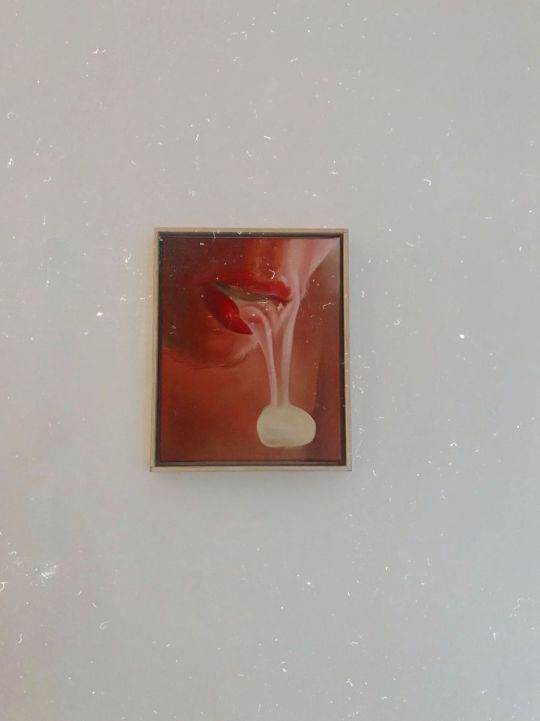
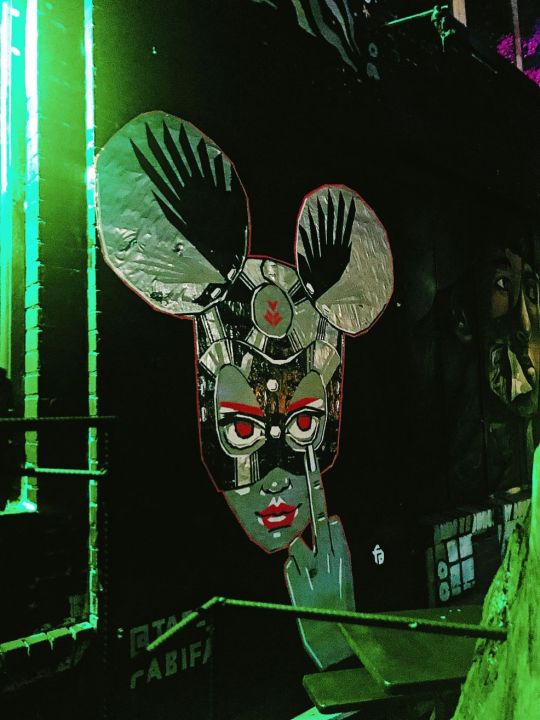
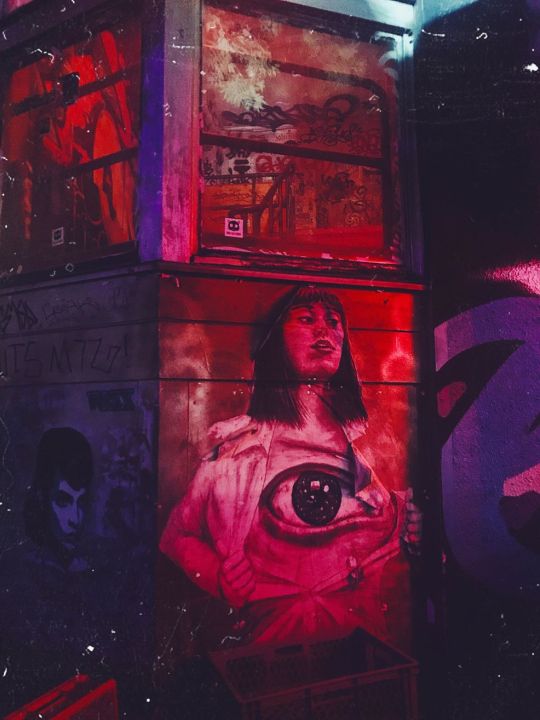
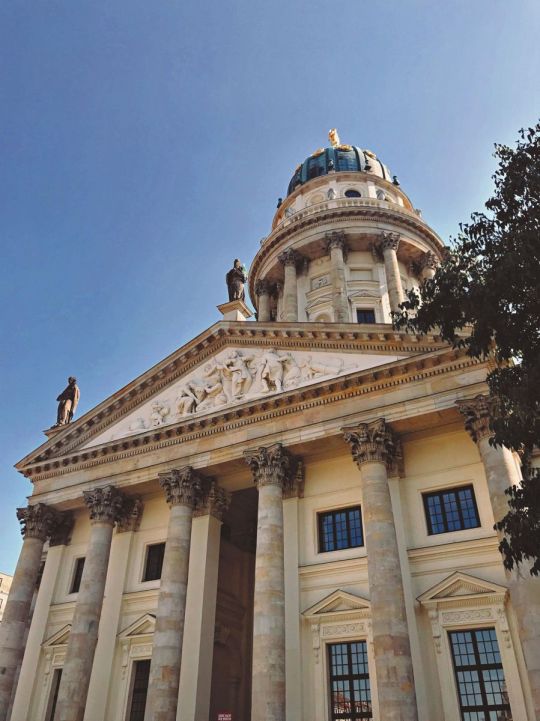
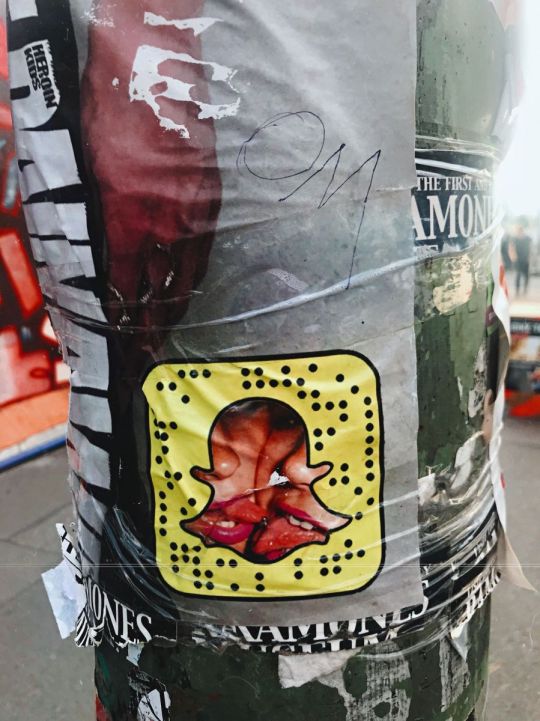
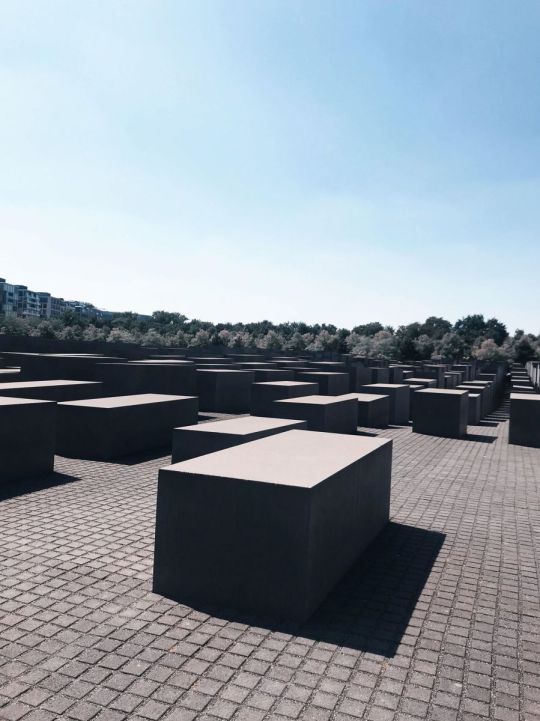
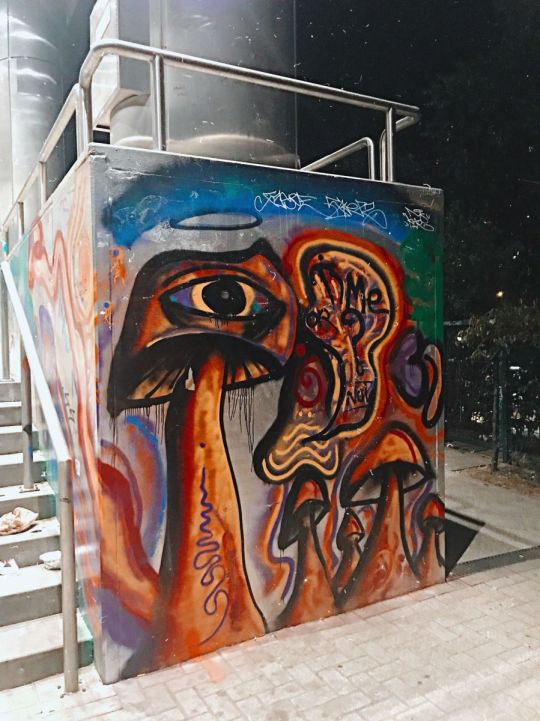
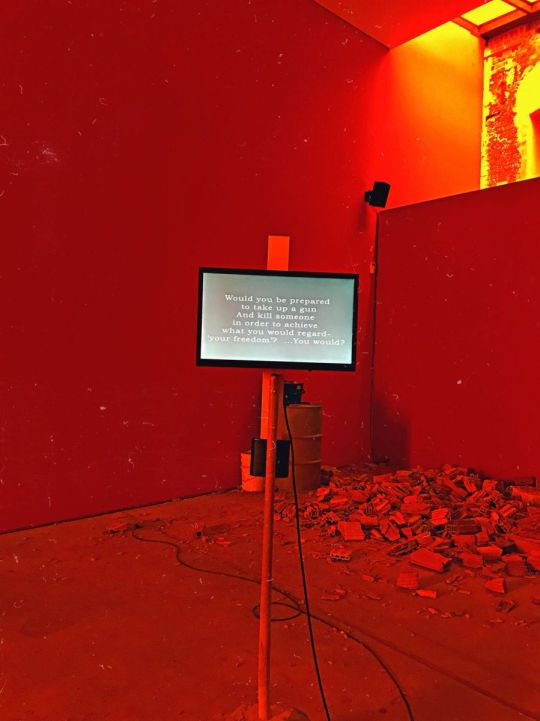
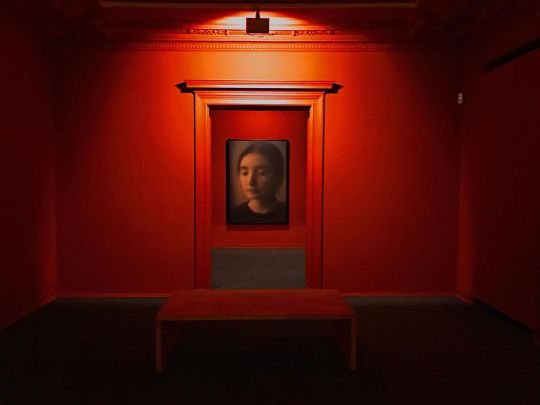
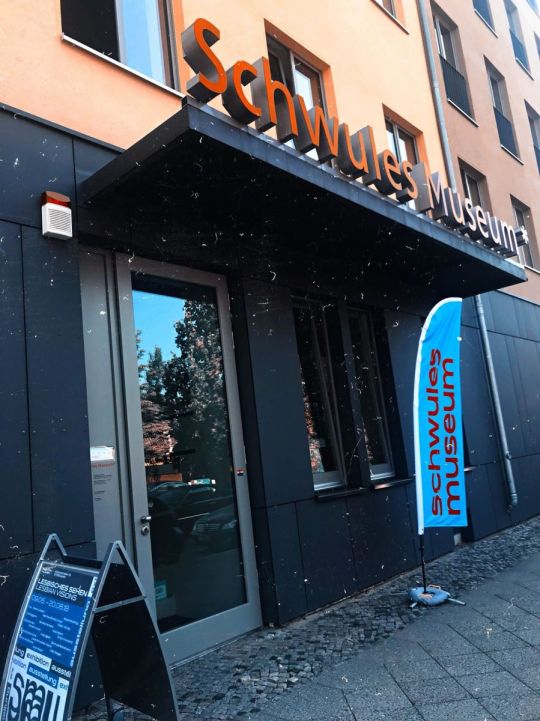
Tender Run Through Memories: You are crazy, my child. You must go to Berlin (2018)
extracts from a Berlin travel guide i worked on during my first internship. i was spellbound by Berlin’s entrancing mix of rich culture & gritty club-scene. i fell in love with the city, bit by bit, and i spent one month reviewing its art, museums and vegan food. during my time there, David Bowie kept ringing in my ears, as it was one of his soul-cities 🌼 you got the width of my tongue name on the sun 🌷 velvet goldmine, you stroke me like the rain, snake it, take it, panther princess you must stay 🦋
Feature: Introduction to Berlin
Much has been written about Berlin’s blend of history, outstanding culture and infamous nightlife. Proclaimed the capital of cool, Berlin is where you can “go to all-night parties, attend a screening of an arthouse film and an anti-Trump demonstration within 24 hours”, as The Times noted. Some talk about Berlin’s fall from grace, wondering if the city’s growing popularity diminished its authenticity and turned the city into a growingly expensive tourist trap.
From Marlene Dietrich, who sang “I still keep a suitcase in Berlin” with a piercing longing, to the rebellious singer Iggy Pop, who called Berlin his home, many artists have voiced their love for Berlin.
“You are crazy, my child. You must go to Berlin” (Franz von Suppé)
Affordable, buzzing, wild and carefree, Berlin is a symbol for tolerance and open-mindedness. Unlike other metropolises in Europe, it’s a place where you can relax. Berliners do not rush. They take their time, basking in the sun with their low-cut T-shirts and heavily tattooed arms, flicking back their occasionally bright-coloured hair.
Nights in Berlin are freaky, intense and fiery. The club culture is exhilarating; anything goes. Berlin is a techno capital: notorious DJs, outrageous raves and 36-hour long parties. There are plenty of clubs to choose from, perhaps the most infamous being Berghain, which pays the same taxes as theatres and concert halls, as it is considered to produce work of cultural significance.
It’s magical to lose yourself in Berlin’s night scene, in the hazy beat of electronic music and in the half-clothed masses. There is a strong sense of acceptance. You are free to be yourself. You won’t be judged.
________________________________________________________________
“Berlin, the greatest cultural extravaganza that one could imagine” (David Bowie)
Berlin is a home to artists and a paradise to emerging creators, who come here to pursue their dreams. There are around 20,000 artists living and working in the city, lured by cheap rents, the city’s libertine energy and the massive studio spaces. The street art mirrors the city’s fantastic art scene.
Berlin is bursting with culture and history. It has 175 museums, even more than New York. It’s an open museum too: from the Berlin Wall to Checkpoint Charlie and to the Nazi book burning site at Babelplatz, Berlin’s unique history can be seen by foot.
________________________________________________________________
“Berlin is cheap, but sexy” (Klaus Wowereit)
Berlin is the cheapest capital city in Western Europe. While it is getting expensive, perhaps because of its touristy appeal, it is the perfect place for backpackers, artists and adventurers for now. You can get a cup of coffee for €2, a lunch for less than €10, a pint of beer for €2-4, a day travel pass for €6,50 and a decent double room in a hotel for €50 per night. What is more, some of the attractions of Berlin are free, such as East Side Gallery, Raw Tempel and Yaam Beach.
_______________________________________________________________
Paris is always Paris and Berlin is never Berlin! (Jack Lang)
Nonetheless, Berlin is constantly changing, you never know what to expect. You need to experience it yourself.
________________________________________________________________
Reviews: Art, Beauty & Vegan Food
Beyond Compare: How African and European Sculptures Carve the Essence of Humanity
There are few exhibitions as fascinating as Bode Museum’s “Beyond Compare”. “Beyond Compare” brings together, compares and analyses the sculptural traditions of two continents by displaying, side by side, 70 African sculptures, along with renowned masterpieces from Byzantium, Italy and central Europe.
Despite their radical stylistic differences, it is interesting to observe how the artworks touch the same themes. They illustrate the frailty of the human experience, exploring subjects such as death, beauty, motherhood, power, spirituality and love. Cultures apart, humans seemed to be moved by the same matters; it is remarkable to see the dainty, gothic sculpture of Madonna, Virgin of Mercy, appear next to a seemingly raw sculpture which represents a power figure from Congo. The second sculpture looks quite crude next to the carefully-carved Madonna, but both were made with the intent to ask for protection, to invoke forces that are beyond the physical world.
In the exhibition’s first slide, it is noted that the works displayed were made by human beings, and not by “cultures”, “tribes”, “ethnic groups” or “nations”. It is important to keep this in mind while strolling through the museum, as this exhibition is not an objective comparison between two different cultures, but a soft reflection of human nature.
Address: Am Kupfergraben, 10117 Berlin. Closest stations: Friedrichstraße, Hackescher Markt; Bus TXL Staatsoper, Lustgarten, Friedrichstraße. Opening hours: Monday – closed; Tuesday, Wednesday, Friday, Saturday, Sunday: 10:00 – 18:00; Thursday: 10.00 – 20.00. Prices: 12,00 EUR, Reduced 6,00. Website: https://www.smb.museum/museen-und-einrichtungen/bode-museum/home.html Contact: Tel 030 266 42 42 42
______________________________________________________________
Enjoy the silence in Museum der Stille
Museum der Stille (“Museum of Silence”) is a unique invitation to embrace the silence in the middle of the lively district of Berlin Mitte. It’s a small, free and beautiful exhibition of paintings and architectural models that illustrate different stages of stillness. It is lovely, subtle and, above all, silent. In the middle of the museum, there is only one piercing painting of a woman who’s gazing through you, with a simple wooden bench in front it. The walls are a deep, warm red and the light is dimmed. The profound silence makes the experience sincere and intense; you are struck by a strong feeling of here and now. While at the beginning you might be put off by the awkwardness of hearing your feet clumsily shuffling through the museum, you will gently ease into the museum’s serenity, if you let yourself. For once, you do not have to rush. It’s enough just to take it all in.
Even after leaving the museum and walking back into broad daylight, the spell of silence is not broken. You might be finding yourself humming Depeche Mode and thinking that they were right, perhaps. It is enough just to enjoy the silence.
Address: Linienstraße 154A, 10115 Berlin Closest stations: Oranienburger Tor, Oranienburger Straße. Opening hours: Tuesday - Sunday 14:00 - 19:00 Prices: Free Website: http://museum-der-stille.de/de/ Contact: [email protected] Tel: +49 (0) 30 278 919 90
________________________________________________________________
CWC Gallery: exploring the modern and the contemporary
If you have a soft spot for art, but find most museums to be too sombre and a little old-fashioned, CWC Gallery might just be the place for you. “CWC” stands for “Camera Work Contemporary” and, as its name suggests, it focuses on contemporary and slightly modern positions found in photography, painting and sculpture. The gallery is in the heart of the bohemian Berlin-Mitte quarter and, while stylish and elegant, it isn’t pretentious and it has an easy-going vibe. It’s also completely free!
The first floor is a homage to the 1990s that recreates the dreamy allure of the era. Wandering around, you are charmed by goddesses of the ‘90s: photos of the iconic Iman, Gisele Bündchen, Uma Thurman and Halle Berry, all captured by Micheal Comte, are plastered on walls. Their half-smile and bouncy curls will leave you longing. You can soothe your temporary nostalgia by moving onto the next floors, where you can admire a beautifully curated and impressive exhibition of modern works of art, some of which display a striking social commentary.
In the same building, you can also find quite an interesting permanent exhibition about The Kennedys, which explores the political success and the private life of John F. Kennedy. The admission fee is 5€.
Address: Auguststraße 11–13, 10117 Berlin Closest stations: Oranienburger Tor, Oranienburger Straße. Opening hours: Tuesday to Friday 10:00 -18:00 Saturday 11:00 – 18:00. . Prices: Free. Website: https://camerawork.de/ Contact: [email protected] Tel 030 24048614
________________________________________________________________
Yoyo FoodWorld: the oldest vegan fast-food joint in Berlin
Yoyo FoodWorld is a hip fast-food joint on the Gärtnerstrasse 27 and the first and oldest vegan fast-food in Berlin.
For almost ten years, Yoyo hasn’t been your typical fast-food. Its atmosphere is similar to one of a quiet, cozy indie bar. Indoors, the light is slightly dimmed and there are photos of famous musicians and philosophers plastered on the restaurant’s walls, along with cult film posters that would make any film student swoon. Soft rock music plays in the background. The outdoor sitting is just as delightful, as the area surrounding the joint is lovely and inviting.
The food is cheap, fantastic and sure to satisfy your cravings, as the options are varied. They have 3,50€ burgers, 6,50€ pizza, 5€ wraps, 6€ schnitzels, 5€ seitan Currywursts, 3,80€ sea food and meatballs at the price of 8 for 3,20€. All the dishes are deliciously vegan and would work perfectly as comfort food or hangover food. It’s also the place to take your friends to convince them that vegan food is tasty.
Another highlight is the toilet, which is exceptionally cool. It’s filled with queer stickers, feminist and political statements, colourful graffiti and carefully scribbled love poems; ideal for a quirky Instagram post.
Address: Gärtnerstraße 27, 10245 Berlin Closest stations: Samariterstr., Frankfurter Tor, Warschauer Str. Opening hours: Monday- Thursday 12:00 - 23:00, Friday - Saturday 12:00 - 00:00, Sunday 12:00 - 23:00. Prices: € Website: http://www.yoyofoodworld-berlin.de/ Contact: [email protected]
______________________________________________________________
Get fettundbetrunken at the Chaostheorie
Chaostheorie is the first vegan cocktail bar in Germany. Their slogan is “fettundbetrunken”: “fat and drunk”, so expect to find a perfect mix of cheap comfort food and funky alcohol.
Onto the first part of their motto, “fat”: the food is fantastic. From a veganized traditional cuisine to more modern dishes, the highlights are juicy currywursts, enormous doner kebabs, fries with dripping dips, pulled mushroom burgers and thick cheese meatball sandwiches. To sweeten things up, the selection of house-made cakes is flavourful to say the least. The Oreo cake, smooth and crunchy at the same time, is a popular favourite. The soft drinks are also a dream: creamy milkshakes, Snickers, Manner or Oreo flavored, and rich freakshakes. You can settle for classic options, too: late macchiato, hot chocolate with whipped cream and marshmallows, coffee with caramelized milk and hot applesauce with cinnamon and vanilla soya milk.
Now, onto the second part of their motto…”drunk”! You can sip traditional cocktails or try out the bartender’s specials: experimental and refreshing mixtures such as Julep Blue, bourbon, blue curaçao, ginger ale and limette.
The place itself is cozy: dim light, soft indie music, shelves stacked with books and a lovely photobooth perfect for making memories.
Even if you’re looking for a quiet afternoon with good food or for a tipsy evening, in Chaostheorie you can find the things you thought you’d never enjoy again once you went vegan.
Address: Schliemannstraße 15, 10437 Berlin. Closest Stations: Prenzlauer Alle, Stargarder Str., Schönhauser Allee. Opening Hours: Mon, Tue, Wed: 17:00 – 22:00; Thu: 17:00 - 23:00; Fri: 17:00 - 01:00; Sat: 15:00 - 01:00; Sun: 15:00 - 22:00. Price range: € (under €10). Website: http://www.chaostheorie.berlin/ Contact: 030/548 907 34; [email protected].
_____________________________________________________________
Challenge yourself at the Kunst-Werke Institute for Contemporary Art
The Kunst-Werke Institute for Contemporary Art is a remarkable contemporary art institution located in the Berlin’s picturesque district Mitte. The building is a sight itself and it has a sophisticated allure, tall and elegant. The outdoor café has a lovely Parisian appeal and it’s where the hip tattooed artists you might have seen on Tumblr sip their coffees in the afternoon.
The works of art exhibited in the Institute are complex. You can marvel at political activist art, video art, visual art or interactive art. They’re also controversial, with people either excitedly praising them or dismissing them as meaningless. The exhibitions are divided into rooms: in some rooms you might be deafened by booming nature sounds, while in others you might be asked to take off your shoes and wander into an empty, soundproof room, where you’d be faced with a gut-wrenching documentary about the condition of the modern black artist. However, you never know what to expect, as the exhibits change constantly. Nonetheless, the works of emerging young artists are unique and do not hold the reassurance of traditional art: they challenge you and shake you. They draw out a strong response, be it positive or negative.
Finally, even if you occasionally roll your eyes at modern art, you should give the KW Institute a chance. At least one of the works of art displayed might move you.
Address: Auguststraße 69, 10117 Berlin. Closest stations: Oranienburger Tor, Oranienburger Straße. Price: 16€ general entrance, 10€ reduced. Opening hours: Monday: 11:00 – 19:00. Tuesday: Closed. Wednesday: 11:00-19:00. Thursday: 11:00-21:00. Friday, Saturday, Sunday: 11:00 – 19:00. Website: https://www.kw-berlin.de/ Contact : +49 30 243459-0, [email protected].
______________________________________________________________
Be Here, Be Queer at the Schwules Museum
The Schwules Museum is the world’s first gay museum, originally opened in 1985. It exhibits the violent history and the injustices the LGBTQ community endured in the past, as well as Berlin’s current queer life.
Schwules is not your typical queer museum. If you expect it to be bustling with colour and rainbows, you might be taken aback. To an extent, it is exceptionally colourful, with cheeky illustrations of young gay couples kissing, soft porn photos and neon slogans about love. But a more serious tone is predominant. The permanent exhibitions also depict gay history milestones, such as the feminist revolution, the composition of the first feminist songs of the German movement or the protests of a working group of lesbian teachers. In the middle of the museum, there’s a memorial dedicated to the LGBT people who were killed in concentration camps. Their names are written in blood-red. You will also shudder upon entering the museum, where you can see a lengthy list of countries where homosexuality is currently considered a punishable crime.
It is important to go to the Schwules Museum because you will be reminded of how painful history is and how the free world we live in required sacrifices. And how, for some, the world still isn’t free.
It is not allowed to take pictures, which at first might be quite annoying, as your initial impulse might be to want to immortalize everything. However, this might help you take in all the information and carefully weigh what you’re seeing.
Finally, is important to go to the Schwules Museum because you will be reminded of how painful history is and how the free world we live in required sacrifices. And how, for some, the world still isn’t free.
Address: Lützowstraße 73, 10785 Berlin Closest Stations: U Nollendorfplatz, U Kurfürstenstraße, Lützowstraße / Potsdamer Straße, Lützowplatz. Opening hours: Monday: 14:00 – 18:00, Tuesday: Closed, Wednesday: 14:00 – 18:00, Thursday: 14:00 – 20:00, Friday: 14:00 -18:00, Saturday: 14:00 – 19:00, Sunday: 14:00 – 18:00. Price: € 7.50 regular, € 4 reduced. Website: https://www.schwulesmuseum.de/ Contact: 030 69599050
______________________________________________________________
Sun and wholesome food at The Bowl
The Bowl, self-proclaimed a “clean-eating restaurant”, is the perfect place for a cozy lunch with your friends or for a breakfast date with a book. They only use fresh, seasonal, healthy and gluten-free products. Everything is fully sustainable and vegan. They even use natural sugar! And, truthfully, the food is indeed full of flavour and it leaves you with a sense of freshness. They have a great variety of bowls: from rich breakfast bowls filled with sweet fruit, raw chocolate and creamy soy yoghurt to lavish plates with roasted vegetables, mashed avocado raw crackers, zucchini and smoked paprika.
The desserts are a treat, as well. The highlights are the lush vanilla almond cake, with coconut blossom sugar, raw chocolate and coconut strawberry and bananenbrot, with grilled banana, granola, warm strawberry sauce and raw chocolate.
While it is a bit pricey, 6,50 € for breakfast bowls and around 10 € for the lunch specials, the naturalness of the food, its filling base and vitamin-rich toppings make it all worth it.
The dishes are perfectly Instagrammable and the colourful variety of vegetables and legumes doesn’t even need a filter. While enjoying your wholesome food, you can bask in the sun in front of the large windows and observe the buzzing Warschauer Straße, with hazy, synth-pop music unfolding in the background.
What is more, on the ground floor of the same building where Bowl is, you can find Veganz, a plant-based supermarket with an impressively wide range of products, from cheese and ham slices to cashew cookies, ice cream and the finest chocolate cream.
Address: Warschauer Str. 33, 10243 Berlin Closest Stations: Warschauer Str. Opening hours: Monday: 10:30-23:00, Tuesday: 10:30–23:00, Wednesday: 10:30–23:00, Thursday: 10:30–23:00, Friday: 10:30–23:00, Saturday: 10:00–23:00, Sunday: 10:00-23:00. Price: €€ Website: http://www.the-bowl.de/ Contact: 030 29771447
8 notes
·
View notes
Photo

The Aérospatiale/BAC Concorde is a British–French turbojet-powered supersonic passenger airliner that was operated until 2003. It had a maximum speed over twice the speed of sound, at Mach 2.04 (1,354 mph or 2,180 km/h at cruise altitude), with seating for 92 to 128 passengers. First flown in 1969, Concorde entered service in 1976 (scheduled flights began on 21 January 1976) and operated for 27 years. It is one of only two supersonic transports to have been operated commercially; the other is the Soviet-built Tupolev Tu-144, which operated in the late 1970s.
Concorde was jointly developed and manufactured by Sud Aviation (later Aérospatiale) and the British Aircraft Corporation (BAC) under an Anglo-French treaty. Twenty aircraft were built, including six prototypes and development aircraft. Air France and British Airways were the only airlines to purchase and fly Concorde. The aircraft was used mainly by wealthy passengers who could afford to pay a high price in exchange for the aircraft's speed and luxury service. For example, in 1997, the round-trip ticket price from New York to London was $7,995 (equivalent to $12,700 in 2019), more than 30 times the cost of the cheapest option to fly this route.
The original programme cost estimate was £70 million. The programme experienced huge overruns and delays, with the program eventually costing £1.3 billion. It was this extreme cost that became the main factor in the production run being much smaller than anticipated. Later, another factor, which affected the viability of all supersonic transport programmes, was that supersonic flight could be used only on ocean-crossing routes, to prevent sonic boom disturbance over populated areas. With only seven airframes each being operated by the British and French, the per-unit cost was impossible to recoup, so the French and British governments absorbed the development costs. British Airways and Air France were able to operate Concorde at a profit after purchasing their aircraft from their respective governments at a steep discount in comparison to the program's development and procurement costs.
Among other destinations, Concorde flew regular transatlantic flights from London's Heathrow Airport and Paris's Charles de Gaulle Airport to John F. Kennedy International Airport in New York, Washington Dulles International Airport in Virginia and Grantley Adams International Airport in Barbados; it flew these routes in less than half the time of other airliners.
Concorde won the 2006 Great British Design Quest, organised by the BBC and the Design Museum of London, beating other well-known designs such as the BMC Mini, the miniskirt, the Jaguar E-Type, the London Tube map and the Supermarine Spitfire. The type was retired in 2003, three years after the crash of Air France Flight 4590, in which all passengers and crew were killed. The general downturn in the commercial aviation industry after the September 11 attacks in 2001 and the end of maintenance support for Concorde by Airbus (the successor company of Aérospatiale) also contributed to the retirement.
Scheduled flights began on 21 January 1976 on the London–Bahrain and Paris–Rio de Janeiro (via Dakar) routes, with BA flights using the Speedbird Concorde call sign to notify air traffic control of the aircraft's unique abilities and restrictions, but the French using their normal call signs. The Paris-Caracas route (via Azores) began on 10 April. The US Congress had just banned Concorde landings in the US, mainly due to citizen protest over sonic booms, preventing launch on the coveted North Atlantic routes. The US Secretary of Transportation, William Coleman, gave permission for Concorde service to Washington Dulles International Airport, and Air France and British Airways simultaneously began a thrice-weekly service to Dulles on 24 May 1976. Due to low demand, Air France cancelled its Washington service in October 1982, while British Airways cancelled it in November 1994.
When the US ban on JFK Concorde operations was lifted in February 1977, New York banned Concorde locally. The ban came to an end on 17 October 1977 when the Supreme Court of the United States declined to overturn a lower court's ruling rejecting efforts by the Port Authority of New York and New Jersey and a grass-roots campaign led by Carol Berman to continue the ban. In spite of complaints about noise, the noise report noted that Air Force One, at the time a Boeing VC-137, was louder than Concorde at subsonic speeds and during take-off and landing. Scheduled service from Paris and London to New York's John F. Kennedy Airport began on 22 November 1977.
In 1977, British Airways and Singapore Airlines shared a Concorde for flights between London and Singapore International Airport at Paya Lebar via Bahrain. The aircraft, BA's Concorde G-BOAD, was painted in Singapore Airlines livery on the port side and British Airways livery on the starboard side. The service was discontinued after three return flights because of noise complaints from the Malaysian government; it could only be reinstated on a new route bypassing Malaysian airspace in 1979. A dispute with India prevented Concorde from reaching supersonic speeds in Indian airspace, so the route was eventually declared not viable and discontinued in 1980.
During the Mexican oil boom, Air France flew Concorde twice weekly to Mexico City's Benito Juárez International Airport via Washington, DC, or New York City, from September 1978 to November 1982. The worldwide economic crisis during that period resulted in this route's cancellation; the last flights were almost empty. The routing between Washington or New York and Mexico City included a deceleration, from Mach 2.02 to Mach 0.95, to cross Florida subsonically and avoid creating a sonic boom over the state; Concorde then re-accelerated back to high speed while crossing the Gulf of Mexico. On 1 April 1989, on an around-the-world luxury tour charter, British Airways implemented changes to this routing that allowed G-BOAF to maintain Mach 2.02 by passing around Florida to the east and south. Periodically Concorde visited the region on similar chartered flights to Mexico City and Acapulco.
From December 1978 to May 1980, Braniff International Airways leased 11 Concordes, five from Air France and six from British Airways. These were used on subsonic flights between Dallas-Fort Worth and Washington Dulles International Airport, flown by Braniff flight crews. Air France and British Airways crews then took over for the continuing supersonic flights to London and Paris. The aircraft were registered in both the United States and their home countries; the European registration was covered while being operated by Braniff, retaining full AF/BA liveries. The flights were not profitable and typically less than 50% booked, forcing Braniff to end its tenure as the only US Concorde operator in May 1980.
In its early years, the British Airways Concorde service had a greater number of "no shows" (passengers who booked a flight and then failed to appear at the gate for boarding) than any other aircraft in the fleet.
* Photo Above: Concorde 001 first flight in 1969
Daily inspiration. Discover more photos at http://justforbooks.tumblr.com
22 notes
·
View notes
Text
ep. 49: No one ever walked up to Degas and said, "Hey, pal, easy with the dancers."

Hey, easy with the podcasting already! We hope you don’t say that to us, or to tell Degas you’ve had enough of his dancers already. We’re feeling super cultured in this episode, discussing paintings, sculptures, and other works worthy of art museums from the Impressionist artist Edgar Degas. How was he different from other Impressionist artists? Why did Sookie compare her cooking to his dancers? And why mustn’t Taylor meet any of her heroes? We cover all that, plus we finally uncover the answer to a pop culture ref we investigated last season and didn’t feel like we fully understood by the end of the episode. Two refs for the same price of a free episode!
You’re the Best/You’re the Worst: Sookie moments
Other pop culture we ref: Funny Face, La La Land, HQ Trivia, Night at the Museum: Battle of the Smithsonian, Vincent Van Gogh, Claude Monet, Thomas Crown Affair, Misty Copeland, Errol Flynn, Ferris Bueller’s Day Off
LISTEN TO THE EP
Apple Podcasts
Google Play
Stitcher
MORE ABOUT EDGAR DEGAS
Edgar Degas biography, Met Museum
About Little Dancer sculpture, St. Louis Art Museum
Edgar Degas biography, Norton Simon Museum
“Working Girls: Degas and the Dancers,” Vanity Fair (2002)
Watch 1915 footage of Rodin, Monet, Renoir, and Degas, HyperAllergic.com (2015)
“Little Dancer Brings Us to See the Person Behind the Famous Degas Sculpture,” NPR (2018)
“Marie van Goethem, Edgar Degas’s ‘Little Dancer,’ is nameless no more,” BostonGlobe.com (2018)
Photo below from Taylor’s trip to the St. Louis Art Museum.

Little Dancer of Fourteen Years, c.1880, cast c.1920, Bronze, gauze, and satin.
Photos below from Taylor’s trip to the Norton Simon Museum in Pasadena, California, in January.


Dancers in the Rotunda at the Paris Opéra, c. 1875-1878 and c. 1894, Oil on canvas




Little Dancer, Aged Fourteen, Modeled 1878–81; cast after 1936, Painted bronze with cotton and silk on a wooden base
Photos of Edgar Degas artworks below courtesy of NortonSimon.org.

Little Dancer, Aged Fourteen, Modeled 1878–81; cast after 1936, Painted bronze with cotton and silk on a wooden base

Dancer in Green, c. 1897-1901, with later additions, Pastel on paper, mounted on board

Women Ironing, Begun c.1875-1876; reworked c.1882-1886, Oil on canvas

Arabesque over the right leg, left arm in line, Modeled 1885-90; cast 1919-21, Copper alloy

Dancers in the Rotunda at the Paris Opéra, c. 1875-1878 and c. 1894, Oil on canvas

Dancers in the Wings, c. 1876-1878, Pastel, gouache, distemper, and "essence" on paper, mounted on board

Dancers in Pink, c. 1886, Pastel on paper, mounted on cardboard

The Star: Dancer on Pointe, c. 1878-1880, Gouache and pastel on paper, mounted on board
MORE ABOUT DEGAS IN POP CULTURE
The Little Dancer in Night at the Museum: Battle of the Smithsonian (2009)
Misty Copeland recreates Edgar Degas paintings, Harper’s Bazaar (2016)
Side-by-side comparisons of Edgar Degas artworks with photographs of Misty Copeland courtesy of HarpersBazaar.com.




#Gilmore Girls#Edgar Degas#Misty Copeland#Melissa McCarthy#Sookie St. James#Impressionism#Gilmore Girls: A Year in the Life#Gilmore Girls: AYITL#Gilmore Girls Revival
1 note
·
View note
Text
The Luxembourg museum (called ML), a museum for the wealthy elite which try to popular.
Proclaimed the “successor to several institutions”, the Luxembourg Museum is one of those museums which participated in the cultural influence of France, and specifically Paris, throughout two centuries. In 1750, it was the first museum of ancien art open to the public. But why is it not the most well known and popular museum in Paris today ? What I mean is that we mention the Louvre, the Orsay Museum and L’Orangerie more than the ML. I think there’s a lack of accessibility and modernity of its exhibitions.
I want to focus on the written summary published on the website of the ML which I already quoted to introduce this review. The ML is presented as a place where to admire contemporary pieces of art. The museum was “sacred” and powerful because theses pieces of art were moved to the Louvre museum at the artists’s death. This desire for notoriety and prestige lives on in 2022. But the museum has lost its power due to a lot of relocations and the gift of its collection to several museums in Paris. Forty years after its closure, the museum opened again. It’s now directed by an institution that groups the national museums in France. However, exhibitions are not really accessible even if it’s a public institution.
I will argue why it’s not enough, but I admit, well advanced. First, the price isn’t correct. The full fare is 13 euros and the reduced rate is 9 euros (included young people under 26). The prices are expensive in comparison with the prices of the Louvre that included collection and exhibitions for only 15 euros. It’s the same than the Centre Pompidou. These museum are free for people under 26. That’s why I assign it with the highest classe. My personal experience is really recent, and happen this week during the Nuit Blanche. Thank’s to the event, I could visit the exhibition Mirroir du monde for free throughout the night. That was my first experience but also the one of my friend, for the same reason than mine. The price isn’t accessible. I discover thank’s to the research for this article, that a price « Special Jeune » exists after 4pm but not the week-end.
The identity of the museum evolved. The communication of the actual exhibition is very dynamic. Subway’s posters attract me. It’s more modern and young through pink color used for the background. That’s a new vision on the ancient art. Pastel colors reveal the beauty of objects presented in the exhibition. It’s something that we don’t highlight with traditional and former posters of this museum. However, the risk of this new typography causes clumsiness. The text isn’t in harmony with the image. But I support this change.

Image: Poster to communicate the new exhibition of the ML Mirroir du monde
The scenography is a rework of this new identity. What a pleasure to admire the collection with colors that contrast with objects. Each new color indicated a new space and topic. I was surprise to discover the real size of the Jesus’s figurine used on the poster. The wee Jesus was dominated the display, even if it is more big than him. Mirrors and holes on the wall played with the collection too. The captions were discret but guided us by funny numbers engraved and colored in piece of wood. The scenography was efficient and teaching but the exhibition too brief. I’m curious to see more variety of displays and more interplay with the visitor.

Image: vitrine of the exhibition Mirroir du monde, photography by Laura Martin Rolland
Finally, the most important part was the reading of the exhibition catalogue. I was amazed by the two different forms: one book and one news paper more concise. These several editions were adapted to different kind of public. I notice the accessibility that allow these documents. The book is an encyclopedia while the news paper is a souvenir to outline the exhibition. Prices are different as well. The news paper is only for 6 euros despite its courted typography. The negative point is the excess of this typography for the both. That was the first thing that observe my friend « too much » and it makes the reading more difficult. The corporate Paper! Tigger! took a lot of bias, for example big indents plus narrow margin, several justified settings and most of all the choose of a display typeface for the running head. This typeface was in addition bold. The graphic designer adopted a spectacular layout than a useful ones.
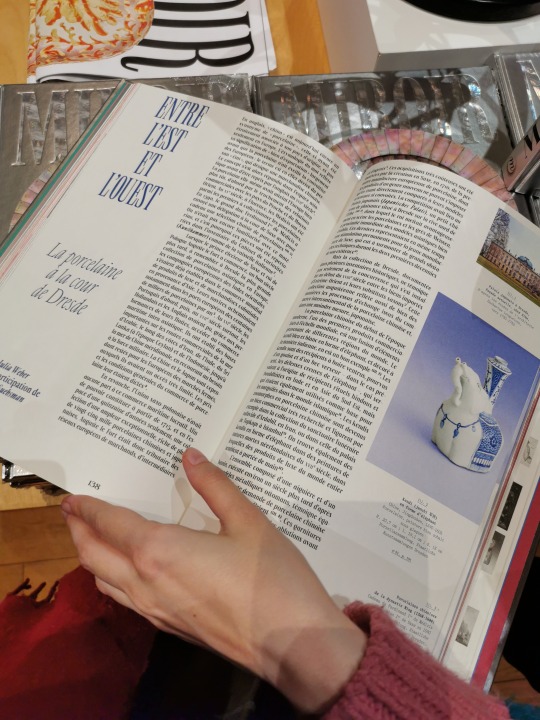
Image: Exhibition catalogue of Mirroir du monde edited by Paper! Tigger!
I don’t recommend this exhibition but I also don’t advise against it. The ML is about to growth, there are negative as good aspects . We should track the following exhibitions because Mirroir du monde was the begging of something new. But not yet something revolutionary to cost 13 euros.
2022/10/02
3761 types
0 notes
Photo

Still life of Beetle with Figs
Giovanna Garzoni and the Art of the Miniature Giovanna Garzoni (1600 - circa February 1670)
'Giovanna Garzonni is considered to be one of the greatest Italian miniaturists of the seventeenth century. Born in 1600 in Ascoli Piceno, Garzonni's talent was first noticed when she apprenticed with a pharmacist in her home town. Her parents, Giacomo Garzoni and Isabetta Gaia both came from families of artisans but were not artists themselves. They could provide no training for their daughter, as was typical for many women artists of the period. Instead, Garzoni received her training from Giacomo Rogni, as explained in a letter written by the artist in 1620. In 1622, Giovanna married the Venetian artist Tibero Tinelli, but the marriage only lasted for two years, due in large part to her vow of chastity.
When the artist was thirty, she moved from Venice to Naples with her brother, and painted numerous miniatures for her patron, the Spanish Duke of Alcalà . In letters she professes to being unhappy in Naples, preferring to work and die in Rome. When the Duke of Alcalà returned to Spain, Garzoni used the opportunity to accept the invitation of the Duke of Savoy to move to Turin. She worked in Turin for five years but the commencement of the War of the Two Ladies forced her to leave. During the 1640s, the artist moved to Florence and became the official miniaturist to the Medici Court, painting numerous still-lifes for the Grand Duke Ferdinando II de Medici. By 1654, the artist settled in Rome where she renewed her activity with the Accademia di San Luca, an association of artists founded in 1593. Although it was not customary to admit women to the organization, records show that she enjoyed many of the same benefits as male members (including cakes brought to her when she was ill) and had the honor of being buried in their church, Santi Luca e Martina.
While Garzoni earned fame during her lifetime for her miniatures, only a few examples of those survive. It is her carefully rendered watercolor still-lifes that have earned the artist enduring recognition. These paintings display a thoughtful synthesis of scientific botanical studies and conventional still-lifes. The use of watercolor and gouache instead of oil adds a sense of delicacy and immediacy to the paintings. Also, the inclusion of insects and well-placed shadows serve to further enliven the compositions. Although her artwork was critiqued by her contemporaries for its subject matter (portraits and still-lifes were viewed as lower forms of art in comparison to figure painting and historical themes), Garzoni's paintings were hugely popular amongst her clients. The biographer Lione Pascoli, in his Vite (1730-1736), stated that she could receive any price for her art that she asked.
Although little was written about the artist during her lifetime (she is briefly mentioned in Carlo Ridolfi's Meraviglie delle'Arte in 1648), she kept excellent records which have been preserved by the Accademia di San Luca. These records make it possible to reconstruct certain elements of her life. Garzoni's fame and skill endowed the artist with a large degree of autonomy. She had the option of working with various patrons throughout Italy and records suggest she also traveled to London and Paris. When Garzoni died in February of 1670, she left all of her possessions and a sum of money to the Accademia di San Luca on the condition that they build a monument to her in their church, which was completed twenty-nine years after her death. ' - From the 'Clara' Database of Women Artists , National Museum of Women in the Arts.
via Stephen Ellcock
198 notes
·
View notes
Text
Hong Kong Sightseeing: 10Best Sights Reviews
New Post has been published on https://www.travelonlinetips.com/hong-kong-sightseeing-10best-sights-reviews/
Hong Kong Sightseeing: 10Best Sights Reviews

The whole of Hong Kong is a sight to see: myriad skyscrapers set around one of the world’s most dramatic natural harbors make for an intriguing panorama by day or night, at dawn or dusk, noon or midnight.
Some of Hong Kong’s sights have been constructed on purpose, others have just grown up of their own accord. Madame Tussauds is a slightly unusual sight, but it’s as much fun observing the reactions of the local visitors as it is marveling at the waxworks of the rich and famous. And the Goldfish Market is pure Hong Kong – right in the heart of the city, a thriving sub-culture that’s right on the street.
And – get this – many of Hong Kong’s sights charge no admission at all, or just a couple of bucks. Stroll along Sai Kung’s Seafood Street for as long as you want, and it won’t cost you a red cent. Star Ferry and the Happy Valley Racecourse must rank as two of the world’s cheapest attractions.
Not all of Hong Kong’s major sights are in town – hop aboard the ferry or the cable car to see the Big Buddha at the Po Lin Monastery on Lantau Island, or wind your way out to the east of Hong Kong for a stroll around the old fishing port of Sai Kung and its buzzing seafood street.

Photo courtesy of Hong Kong Tourism Board
The gods of literature and the military are celebrated here in one of the oldest temples in Hong Kong. Built in the 1840s, you’ll find two unique chairs inside that were once used to carry these deities through the city during festivals. Former visitors have left sticks of incense over the years, which are now hanging from the ceiling; you can still buy one in hopes of fulfilling a wish, while a fortune teller runs a brisk business to one side of the temple. Man Mo is very much on the tourist trail, but with very good reason, and handy for antique shopping along Hollywood Road.
Recommended for Sightseeing because: Man Mo’s traditional architecture makes for a delicate contrast with the surrounding (rather dull) skyscrapers.
Ed’s expert tip: Fans of the Oscar-winning film “Love is a Many Splendored Thing” will recognize Man Mo which was the backdrop for several scenes.
Read more about Man Mo Temple →

Photo courtesy of Hong Kong Tourism Board
Surrounded by high-rises, this downtown racecourse is one of the greatest stadiums on earth to enjoy a sweaty, noisy and adrenaline-pumping horse race at night. Dating back to 1844, the 55,000-seat racecourse is one of the earliest public facilities in colonial Hong Kong. Regular races take place every Wednesday and Saturday from September to June on the 30-meter-wide grass track. A 978-seat iPad-equipped betting hall is located on the second floor of platform one. Visitors can either pay HK$10 (US$1.3) to sit on the public spectator seats or HK$100-150 (US$13-19) to enter the member-only zone. There are a total of seven restaurants and bars in the complex from Cantonese dining to al fresco drinking. On the second floor of the Happy Valley Stand of the racecourse, there is a 670-square-meter museum, Hong Kong Racing Museum, tracing the past and present of the city’s enduring pastime.
Recommended for Sightseeing because: Even if you’re not interested in racing, you can’t help but enjoy the spectacle of this very Hong Kong entertainment.
Ed’s expert tip: There’s a “beer garden” with racing commentary in English available at Happy Valley near the finish line.
Read more about Happy Valley Racecourse →

Photo courtesy of Kowloon Walled City Park
The Kowloon Walled City was truly infamous as it was the only district in Hong Kong that avoided British rule during the 1840 Qing Dynasty. So who ruled the walled city? No one! It was in a state of lawlessness and ruin until it was demolished and the site turned into an award-winning park in the 20th century. It is home to Bonsai trees, relics from the Qing Dynasty, and a popular giant chessboard. This is the ultimate urban regeneration project, not just in Hong Kong but just about anywhere in the world. There’s always a pleasant air of calm, whatever the time of day.
Recommended for Sightseeing because: This would be a first-rate park anywhere; but its history makes it unique.
Ed’s expert tip: Get here first thing in the morning to watch, or join in, tai chi classes.
Read more about Kowloon Walled City Park →
This intriguing museum traces the relatively recent history of medical science in Hong Kong. In 1906, in response to Hong Kong’s ongoing epidemic of bubonic plague, the Bacteriological Institute opened in this building as the city’s first medical laboratory. Over the decades the focus changed (as did the name, to the Pathological Institute), and the building eventually was turned into a museum. Today it houses several galleries with exhibits devoted to Chinese herbal medicine, dentistry, and a unique comparison of Chinese and Western medicine. The building itself is quite interesting as well; among its charms are several fireplaces, a beautiful entry hall, and carefully tiled floors.
Recommended for Sightseeing because: This is not only an unusual museum in a lovely old building, but its contents are also well interpreted.
Ed’s expert tip: This museum lies in a charismatic part of Hong Kong, well worth exploring on foot either before or after your visit.
Read more about Hong Kong Museum of Medical Sciences →

Photo courtesy of Hong Kong Tourism Board
Po Lin translates to “precious lotus,” and this monastery is one of the most famous of Hong Kong’s numerous attractions. In addition to being one of the most opulent and grandest temples in the country, this is also home to the famous “Big Buddha,” which measures more than 100 feet high. Made of bronze and seated in the mythical cross-legged repose, this statue is an attraction on its own. The views of the countryside are spectacular, and an excellent vegetarian cuisine is served by monks in the canteen. Most people come here by road or cable car, both exciting journeys in themselves.
Recommended for Sightseeing because: You can’t ask for a bigger contrast to downtown Hong Kong than this hilltop retreat with its superb views.
Ed’s expert tip: If you’re reasonably fit, it’s perfectly possible to hike up here either from Tung Chung or Shek Pik Reservoir.
Read more about Po Lin Monastery →

A hidden gem of Hong Kong, this fishing town is where Hong Kongers retreat for sea-swimming, kayaking and some of the city’s best seafood. The center of the town is a 1,000-meter-long street lined with seafood stalls. Each looks like a mini aquarium as the boss displays an amazing array of freshly-caught seafood for diners to order. Across the street, fishermen sell curious looking catch right off the boat at the pier. Many of them also offer sailing trips around the surrounding islands for around US$20. Some six kilometers south of the seafood street is Trio Beach, a nice soft-sand stretch with calm and clean water, relaxed atmosphere and opportunities for seaside barbecue. For the truly energetic type, Sai Kung Country Park provides some of the most challenging but rewarding hiking experiences through mountains to beaches.
Recommended for Sightseeing because: There’s something very laid-back about Sai Kung, and especially in the older parts of town.
Ed’s expert tip: Tour operator Kayak and Hike organizes kayak trips from Sai Kung waterfront to marine life-abundant Ung Kong Wan.
Read more about Sai Kung Seafood Street →

Photo courtesy of Madame Tussauds
Yes, there’s even a Madame Tussauds in Hong Kong. Exhibits include “Hong Kong Glamour” (rich, famous and/or powerful), “Historical and National Heroes” (such as former President Hu Jintao, the British Royal Family, and astronaut Neil Armstrong), “World Premier” (national and international film celebrities), “The Champions” (athletes like David Beckham and Tiger Woods), “Music Icons” (international stars like Elvis and Madonna displayed alongside Chinese pop sters like Leslie Cheung, Teresa Teng and Joey Yung). As always at Tussauds, the waxworks are amazingly lifelike, enough to make you do a double-take, even in an age when international celebrities are so familiar from the media.
Recommended for Sightseeing because: The original Madame T opened its doors in Paris in the 18th century: talk about an enduring attraction.
Ed’s expert tip: Get here at opening time (10am) to avoid the crowds.
Read more about Madame Tussauds Hong Kong →

Photo courtesy of Hong Kong Tourism Board
Tung Choi Street is Hong Kong’s street shopping center. Not far from the Ladies Market in the north lies a treasure island that’s uniquely Chinese, the Goldfish Market. This fascinating market is a great place for families to visit. Bags upon bags of live goldfish in different sizes and colors can intrigue even the naughtiest kids. These are sold as pets as the Chinese consider goldfish a sign of good luck and some of the rarer species in the market can fetch great prices. Besides the kaleidoscope-like display of goldfish, the market also sells other small pets including turtles, rabbit and hamsters.
Recommended for Sightseeing because: There’s no razzmatazz involved here, just a straightforward chunk of life in downtown Hong Kong.
Tracy You’s expert tip: The Goldfish Market is a quick walk from the Flower Market on Flower Market Road and the Bird Garden on Yuen Po Street. These three can be easily combined into one trip.
Read more about Goldfish Market →

Star Ferry is the loveliest attraction in Hong Kong. This 115-year-old service is one of these rare attractions that are hailed by both tourists and locals. Shuttling between Tsim Sha Tsui on Kowloon side, and Central and Wan Chai on Hong Kong island, these 20-minute boat rides represent a lifestyle of the past: slow, soothing and stress-free. That’s exactly where the excitement and enjoyment lies. It’s fascinating to see the hyper-busy city from these boats: century-old colonial buildings rub shoulders with glass-walled skyscrapers on the two jam-packed waterfronts. Even with the MTR efficiently connecting Kowloon and Central, locals still choose to ride the Star Ferry now and then for that classic Hong Kong moment.
Recommended for Sightseeing because: This is a piece of history, a sightseeing tour, and a super cheap transport of delight!
Ed’s expert tip: Time your star ferry ride with A Symphony of Lights to achieve an optimal Hong Kong moment.
Read more about Star Ferry →

The 552-meter mountain boasts that classic Hong Kong view. Near the summit there is an entertainment and viewing complex called Peak Tower where travelers can snap that perfect souvenir photo. In the foreground, a forest of skyscrapers rises in eye-opening density beneath your feet while Victoria Harbour glitters in distance. Go on a nice day, you can also make out the outlying islands scattered over the South China Sea. Various modes of transport reach the top but the 1,350-meter-long tram (funicular) line is most popular. The 125-year old track is said to be the first railway in Asia and the eight-minute ride can reach as steep as 30 degrees.
Recommended for Sightseeing because: Missing out the Peak is like ignoring the Eiffel Tower in Paris or Buckingham Palace in London.
Ed’s expert tip: The lush mountain also provides great hiking opportunities. Hikers can bypass the tourist viewing deck and reach the less-crowded summit via several footpaths.
Read more about Victoria Peak →
Source link
0 notes
Text
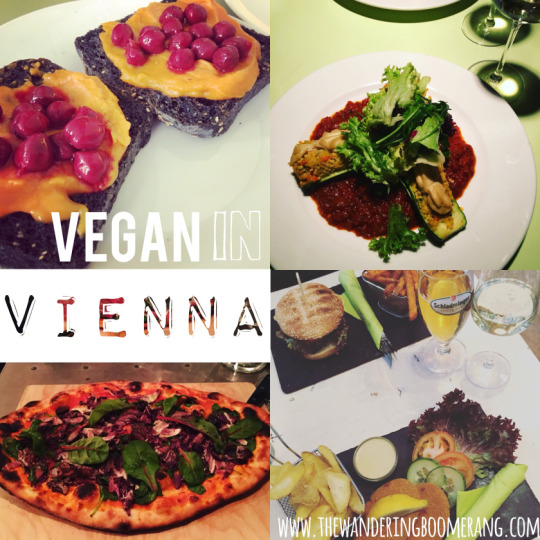
We visited Vienna at the end of February 2018. We arrived in Vienna at lunch time on a bus from Bratislava.
https://thewanderingboomerang.com/2018/04/16/bratislava/
The taxi from the bus station to our hotel was 15 euro. We stayed in 25 Hours Hotel after a long search on Air BNB and booking.com. I read about this hotel on a Vienna travel blog and made a note of it. I did my usual accommodation research and found that the Air BNB options were more expensive than 25Hours Hotel. The other hotels were also more expensive and old fashioned in comparison. I can’t recommend this place enough. It’s modern, the staff were friendly, it’s right beside the town hall/museum quarter and close to the metro.
The icing on the cake was the spa, the free yoga classes and the eco friendly shampoo and soap that was cruelty free! This hotel was made for me.
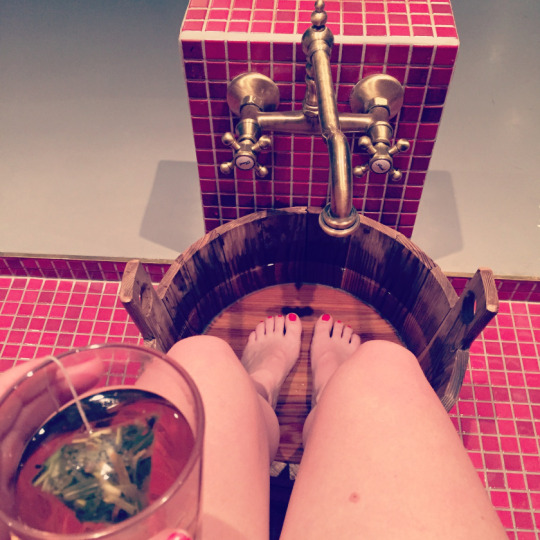
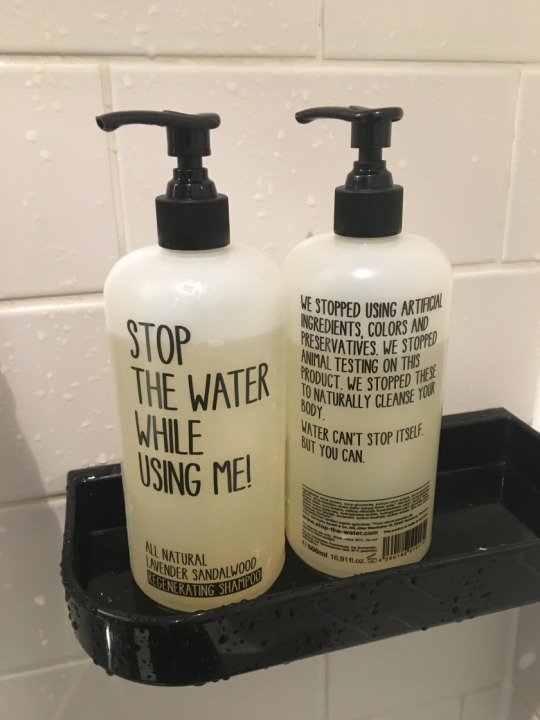
We stayed in the standard double room (98 euro). You can stay in a room with a bathtub on the balcony for 187 euro. Sadly that was out of our price range, but the outdoor bathtub nearly tempted me. I suggested we stay one night in the room with the bathtub and one night in the standard, but they don’t let you use the bathtubs in the winter months 😦
I should also note that I write this blog purely because I enjoy it and I don’t get paid to advertise hotels. I only recommend places I truly love. Thankfully they have hotels Berlin, Cologne, Dussledorf, Frankfurt, Hamburg, Munich, Paris and Zurich. I will definitely stay in 25Hours again in future.
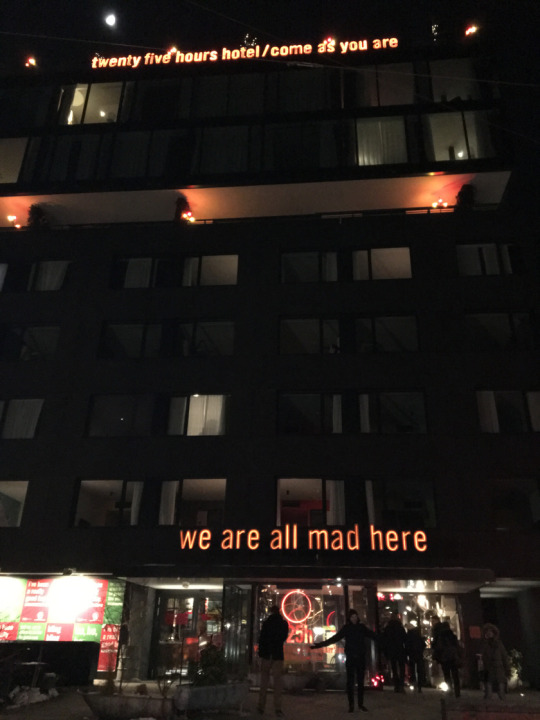
https://www.25hours-hotels.com/en/hotels/vienna/at-museumsquartier
We checked into the hotel and walked to Naschmarkt. This outdoor market is 1 mile long and has been running since the 16th century. It was such good fun bantering with the vendors. They shout at you “where are you from” and “try this, it’s an aphrodisiac”. You will get bombarded by vendors giving you free tasters. We nearly had enough samples to fill us for lunch. They vast array of hummus and olives in all different flavours and colours is worth a visit alone. With plastic free fresh produce, falafels and walls of spices and teas it’s a vegans delight. Don’t miss this! On Saturdays they have a flee market at the end of the mile long strip. I was also pleased to find hot mulled wine stands along the market as it was below zero temperatures that day!
http://www.naschmarkt-vienna.com/
We walked to the Opera House in the hope of getting tickets, but we were unsuccessful. I would suggest researching online before your trip and booking in advance. The tickets can range from approximately 45-150 euro. You can get tickets for 3-4 euro if you are willing to spend half a day queuing for standing tickets, and then willing to stand for the entire show. It was a bitter cold day and our time was limited in Vienna, so we opted out! The queue is indoors for the most part.
We took a walk around and stumbled across Hofburg Palace and the Palmhaus. Go in for a nosey or make reservation to make sure you get a table.
Café Demel is another tick on the tourist list. You can walk in and buy from the shop or queue at the back to get a seat in this beautiful café. We didn’t fancy the queue and opted out!

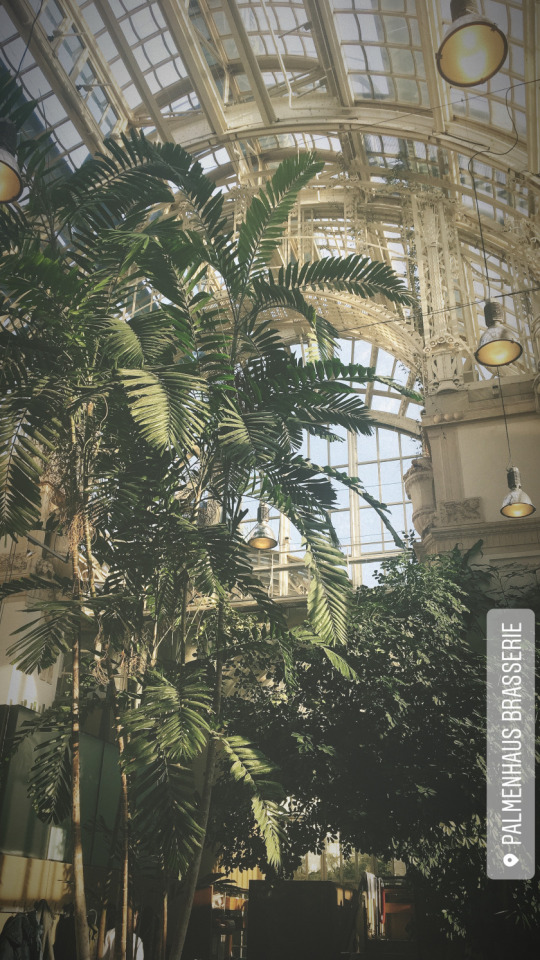
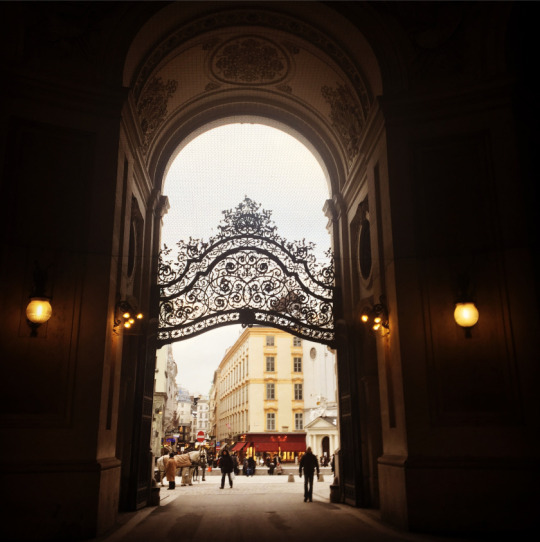


After exploring on foot all we were exhausted and slightly numb. It was an extremely cold day, so we went back to the hotel to warm our bones in the sauna, before heading back out at night time to the Town Hall. Over the winter months this Town Hall Ice Rink runs daily. You can pay for the whole day of skating, but we were pretty wrecked after an hour of fast skating around the rink and through the trees. This was probably our highlight of Vienna. Do not miss this!

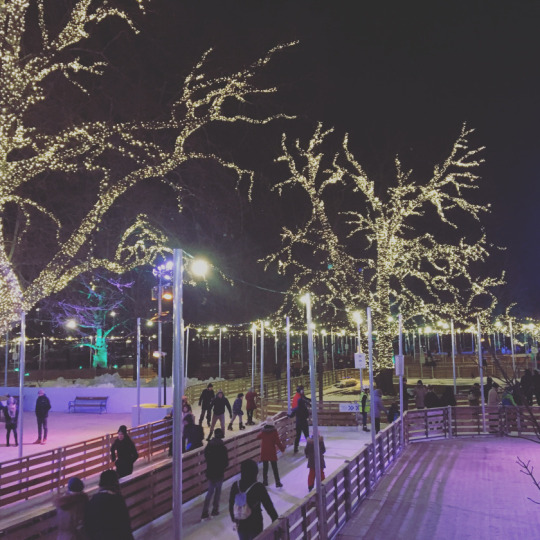
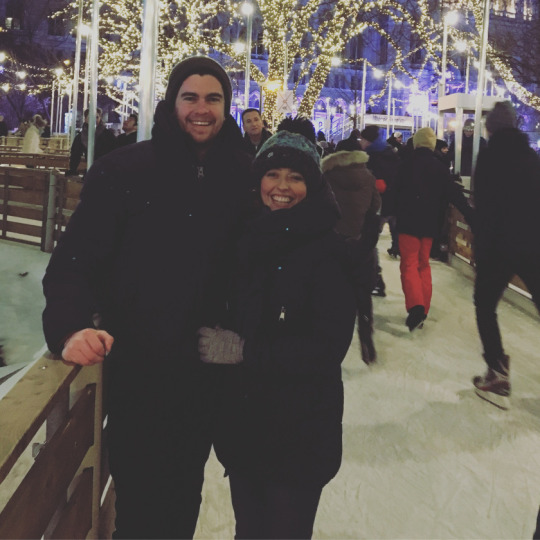
Thankfully our hotel was 5 minutes from the Town Hall or we nipped back to the hotel for dinner at 1500 Food Market. I was able to request a vegan pizza. We went up to the 25Hours hotel rooftop bar to check out the snowy balconies before bed. The restaurant and rooftop bar were busy. I reckon it’s a popular place for the locals at the weekend.
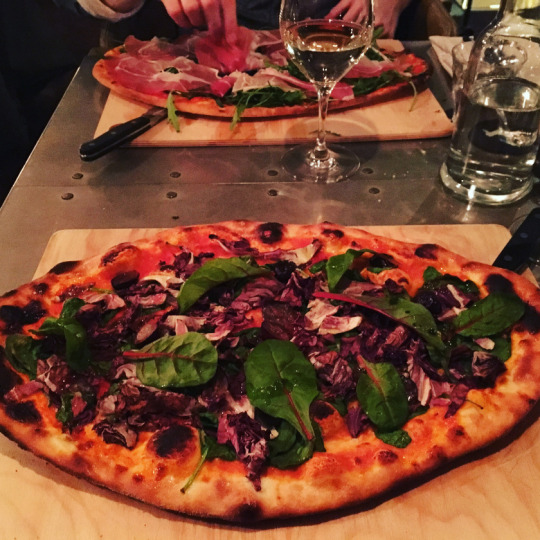
The hotel staff suggested we go to the Burggasse area for Breakfast. It was a 5 minute walk from the hotel. This is a popular place for the locals, and we had breakfast in das mobel café. It had vegan options on the menu and vegan brownies so I was in my element.
I ordered the vegan black bread (coloured with charcoal) with coconut carrot spread and pink chickpeas. Really delicious! I wish we had time to come back here so I could try the rest of the vegan options.
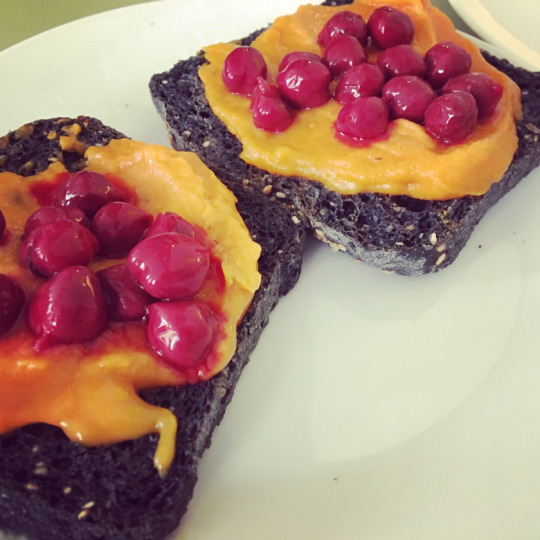
Burggasse is right beside the metro so we jumped on the train to Schonnbrun Palace.
Schonbrunn Palace is a UNESCO world heritage site. The palace has 1441 rooms, and Mozart played here at age 6. You can stay in the palace, if you are willing to part with a good chunk of your spending money.
We walked around the grounds in the snow and sunshine, and found ballet dancers, water features, a zoo, and a café in a monument at the top of the hill to the rear of the palace.
The grounds also have a palmhouse and botanic gardens (7 euro), an orangerie (3.50 euro), maze, labyrinth, playground (5.50 euro), Hapsburgian Imperial Stables and rose gardens, but we had tired ourselves out by then. You could easily spend a whole day here and it’s free to walk around. There’s an apple strudel show outside the Café Residenz every hour (6 euro). You get a sample, the recipe and a free hotline service when making it yourself at home and need help. They also have a panorama train that takes you around the grounds (7euro, 50mins). If you have a Vienna Pass everything is free!
We booked the short tour to go inside the palace and I got a sneaky photo inside the main hall. The audio guide for the tour was interesting and helpful to understand what you were looking at. Don’t do the tour without this!
14.50 euro (short tour 22 rooms)
17.50 euro (long tour, 40 rooms),
or free with a Vienna Pass.

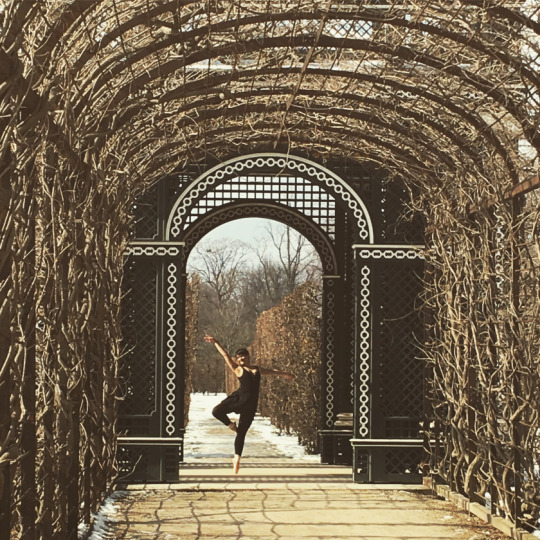


We got the metro back into the city centre and jumped off at St. Stephens Church. It’s free in, but you pay to go to the roof in the smallest lift I’ve ever seen. If your claustrophobic, climb the 343 steps instead. I went up to see the tiled roof but be warned it was bitter cold up there. You can also do a tour of the catacombs below.
There’s also a rooftop bar called ‘Lamee‘ that has a free view of the church roof tiles, although you’ll have to buy a glass of wine or a coffee to sit there.
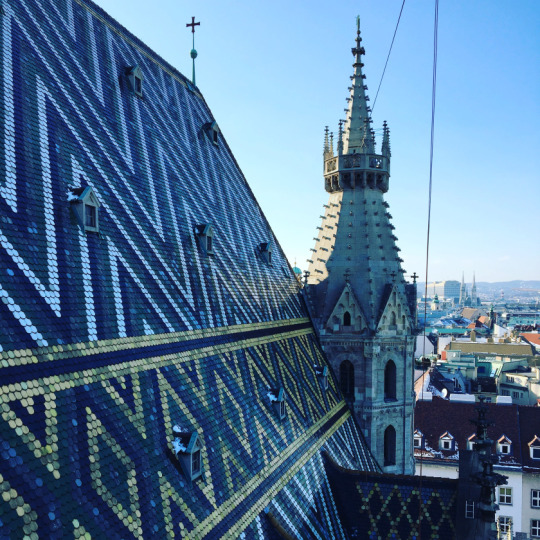
We walked to Vegiezz for lunch. This is a chain vegan restaurant and we saw two on our walks around the city.
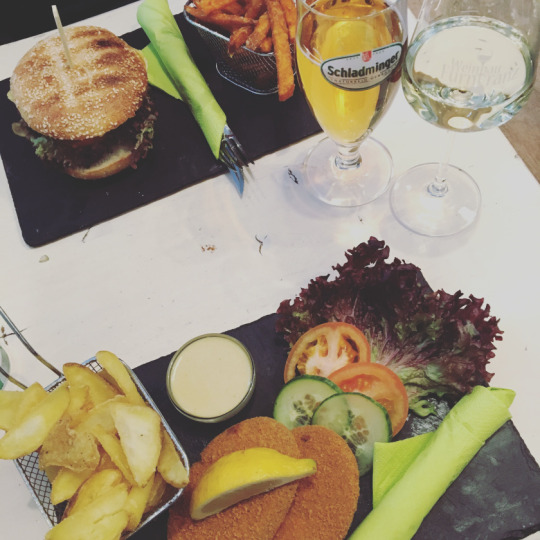

After a long day and a lot of walking, we went back to the hotel for our last go in the spa before dinner.
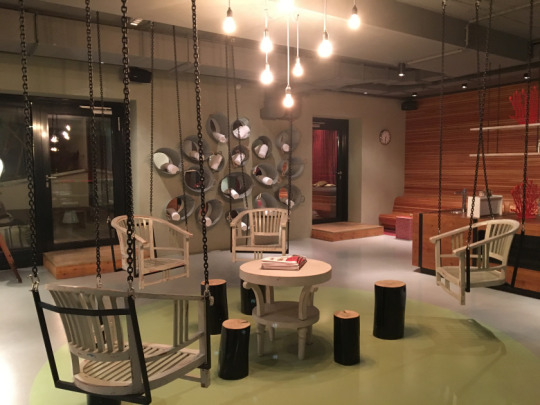
We went to Glasc briesl for dinner. It was a 5 minute walk from the hotel and suggested by the travel guides provided by the hotel. Good food and decent prices. The Vegan dish only 9.80 euro. I was surprised by the prices. I was warned how expensive Vienna was, but our most expensive meal was in Bratislava.
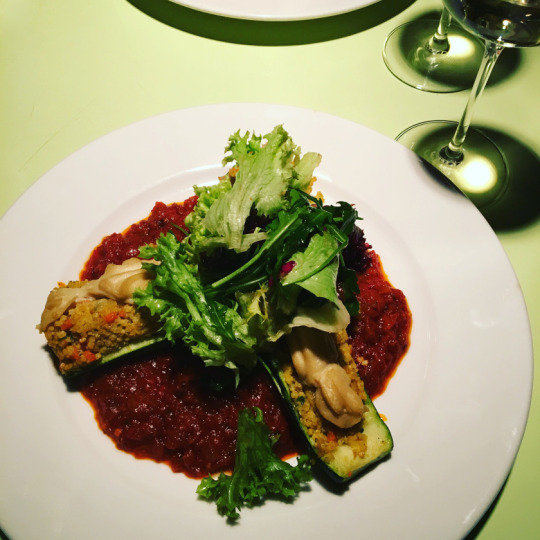
Our flights were in and out of Bratislava so we booked our train back to Bratislava for 10 euro. When booking the train back to Bratislava we booked online with ‘Go Euro’. It told us to use the ticket machines at the station and use the code to print our tickets. This didn’t work and we ended up in the help desk. They only printed them for us out of pity! I would suggest printing the tickets in your hotel or buy the tickets on the ‘OBB‘ website only. You can also buy tickets at machine in Haubanhof Train Station really easily. There was a Starbucks in the station with a vegan option! They had run out unfortunately. Bring food with you!
There were no vegan options in Bratislava airport! In fact the two food options left a lot to be desired. Eat before you go or bring food with you, vegan or not!
Things we missed in Vienna
Belvedere Palace – (UNESCO) 20 euro or Free with Vienna Pass
Vienna Opera http://www.viennaconcerts.com
St. Peters Church – oldest (and apparently nicer than St. Stephens)
St. Michaels Church – large crypt, 4000 corpses including mummified corpses.
Hofburg Palace – in between the church and the gate, there is a small excavation with a glass covering. Archaeologists found remnants of a roman settlement.
Vienna City Hall – (we didn’t enter the building, just ice skated in front of it! In the summer there is a film festival where the ice rink lives in winter.)
Votivkirche Church
Austrian Parliament Building
Burgtheater – Austrian National theatre
Hundertwasset Haus – It is considered cultural heritage. You can visit the house for free and take pictures from outside. The museum is 12 euro or free with Vienna Pass.
Kunsthauswein Museum
Church of Assisi
State Hall, Austrian National Library – (7 euro or free with VP, 10am-6pm) 200,000 value books and a beautiful building.
Albertina Museum – Monet and Picasso and highly recommended (12.90 euro or free with VP)
Time Travel Vienna – multimedia shows, 50 cinemas (19.50 euro or free with VP)
Capuchin Church + Imperial Burial Vault – resting place of emperors and empresses (free with VP)
Leopold Museum – (13 euro or free with VP)
Mumok Museum – Pop art, cubism futurism, surrealism (11 euro or free with VP)
Natural History Museum – largest and oldest meteriote collection (10 euro or free with VP)
Bank Austria Kunstforum – Modernism, Impressionism, Avant Garde and Van Gogh ( 11 euro or free with VP)
Melk Abbey Church
Johann Strauss Apartment
Sigmund Freud Museum
Kunsthistorisches Art History Museum
Zentralfriedhof Cemetery – 2.5milion tombs including Beethoven)
Karl Marx Hof – 1km long. Longest single residential building in the world (19th district)
Watch an Ice Hockey match
Palais Coburg Wine Cellar Tour – stunning according to a travel blog I read.
Outdoors
Prater – large public park with 250 attractions including a Ferris wheel, Madame Tussauds, Prater Museum, Planetarium, indoor skydiving, bungee jumping etc. Free entry, pay per ride. Closed Nov-Mid March, however the Ferris Wheel remains open.
Vienna Ringstrasse – former medieval city walls, 5.3km. You can rent bikes and cycle or there’s a tram that covers the route.
Volksgarten + Augraten parks
Lainzer Tiergarten – Hike (U4 subway, end of the line Huttledorf 25 mins from Vienna) red line = longer route and orange line = shorter route. Lunch at Rorhaus after.
Krapfenwald Outdoor Pool – 4 euro
Oberlaa Therme Wien – Indoor + Outdoor thermal pools
Kahlenburg or Cobenzi hills – good views.
Wienerwaud – Viennese forest and Heuriggendof Grinzing restaurant (expensive)
Am Himmel – outdoor area with Celtic horoscope tree and Oktogon Restaurant (bus 38a/U4 towards cobenzi)
Danube Island – recreational area, sports and beach activities, water playground, swimming. restaurants and free concerts in the summer.
Wakeboarding at Donaukanal – summer only
River Cruise
Shopping
Mariahilfer Strasse – shopping street
Karntner Strasse – Vienna High street
Kohlmarket – luxury Shopping
Kirchengreasse, Lindengrasse, Neubaugrasse – hipster shops
Spittelburg street – shops/cafes, closed sundays
Local food + Drink to try
Apple strudel
Chicken Schnitzel – Figlmuller’s has repution for being the best schnitzel, so expect a mass of tourists.
Goulash
Chocolate Torte Cake – Café Demel
Mineral Drinking water from the taps comes straight from the alps
Wine – Vienna is one of the few capitals in the world that produces it’s own wine
Food and Drinks
Café Central – UNESCO building
Café Speri
Lugeck – recommended for traditional Austrian food (reservation required).
Wratschoko Gatwirkschaft – Austrian style food in 1800’s pub
Gasthaus Kopp – recommended on a travel blog I read.
Mini Restaurant – Hungarian food recommended on a blog, reservation required.
Hotel Sofitel – roof garden + sunset views
57 Lounge + Restaurant – tallest building in Austria
Lamee Rooftop – views of St. Stephen’s Church
Miranda Bar
Sign Lounge
7th + 8th district – night clubs and bars
Vegan food spots we missed
Le Burger – Austrian chain restaurant that drove out mcdonalds from the main shopping street. They serve low card lettuce wrapping instead of bread.
Tian– wonderful vegetarian restaurant
Vegetasia – 100% vegan Taiwanese
YAMM – vegetarian, self service (2.70 euro per 100g) expensive, near Opera
Kostlich – 1-2 vegan options, lunch only
Weltcafe – ethically sourced and organic, 2 vegan options
Brass Monkey – vegan Cupcakes
Harvest – vegetarian, vegan options. Lunch menu (weekdays) and Sunday brunch.
Veganista – vegan ice cream
Pinocchio – Pizza with vegan cheese option (hole in the wall)
Deli Bluem – vegetarian, lots of vegan options + organic breakfasts
Swing Kitchen – 100% vegan fast food (8 euro meals)
Fett + Zucker – vegan cakes
Nom Nom Vegan Bakery
Bio Bar – vegetarian, ask for vegan options
Blue Orange – bagels + sandwiches with vegan options – English menu
Cupcakes Wien – vegan options
Delicious Vegan Bistro – beside Naschmarket but hard to find. Lunch + dinner Pizza and juice bar.
Easy Going bakery – vegan cake pops and cake
Landia – vegetarian with vegan options
Pirata – 100% vegan sushi
Dr. Falafel – vegan options
Mikkamakka – 100% vegan, self service local dishes
Rupp’s – vegetarian Irish pub with cheap vegan options
Café Telegraph – Omni – Serves Avocado Burger
Simply Raw Bakery – zoodles, savoury crepes, raw pizza + cupcakes
Die Bio Bar Von Autun – 100% vegan across the street from Simply Raw Bakery. Serves Schnitzel and Goulash
Hollerei – vegetarian with vegan options
Motte Am Floss – beet burgers on the Danube rover. (The café upstairs is cheaper)
Nimmersatt – 100% vegan + Organic take out
Maran Vegan Bistro – 100% vegan supermarket + deli counter
Formosa food – 100% vegan Asian food including curry soy schnitzel
Loving Hut – 100% vegan on Favouritenstrasse
Vegana Indiana – 100% vegan, gluten free + seasonal
Voodles – 100% vegan
Elmira – 100% vegan
Uli’s Veganeria – 100% vegan
Tuwi – 100% vegan
Salonpafond – vegetarian options, organic locally sourced food

vegan in Bratislava – http://www.thewanderingboomerang.com
You can have a look at my Bratislava and Vienna Pinterest Board
https://www.pinterest.ie/wanderboomerang/bratislava-%2B-vienna/?eq=bratislava&etslf=5933
If you have any more tips or good vegan places we missed in Vienna, I’d love to hear! Please comment below.
Enjoy your trip, and return safely,
the wandering boomerang 🙂
Check out my other vegan + travel blogs…
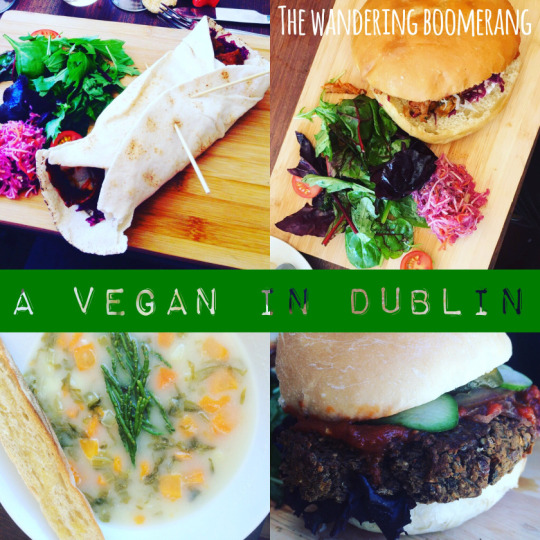

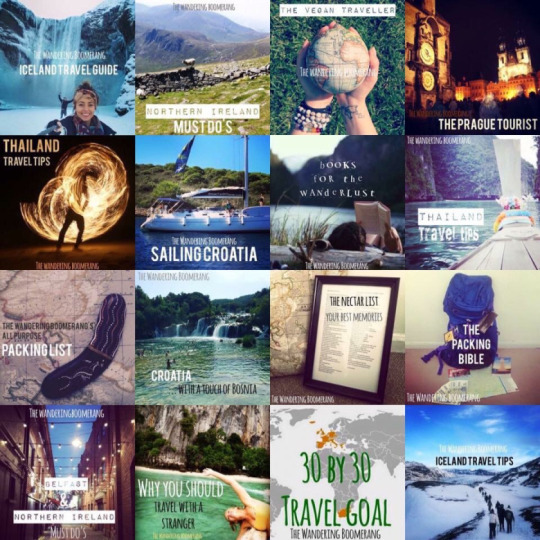
Vienna We visited Vienna at the end of February 2018. We arrived in Vienna at lunch time on a bus from Bratislava.
#Austria#bratislava#slovakia#thingstodoinvienna#vegan#veganinvienna#vegantravel#veganvienna#vienna#viennabestbits#viennatravelguide#viennatraveltips#viennavegan#whattodoinvienna
3 notes
·
View notes
Text
In which Have You Been, Neon Signs, and Where by Are You Likely?
Numerous professionals in the lighting industry imagine that the in general outlook for neon signage looks to be incredibly optimistic. Neon signals have a record of a hundred yrs of profitable use in promoting. If there were no neon signs towns and cities would be darker locations and the neon signal marketplace would stop to exist, but that is not possible to occur.Let’s start out with some normal data about neon these types of as why it is really utilised, works by using other than advertising, where it truly is utilized here and in other international locations, neon signage close to the planet, and so a lot extra. Everyone is familiar with its primary use is for promoting and that is what retains the neon signal business likely, but it has lots of other utilizes that are valuable to the public. Get pleasure from viewing Television set? Neon is made use of in in television tubes. Do you have a neon wall clock? Neon lighting is use in the house and in a lot of firms to improve and emphasize darkish places. It is made use of in fuel lasers is used to take out eye cataracts and for other professional medical difficulties. Numerous folks have flown, but did you know this? It has been made use of in beacons and it has can be observed by pilots have observed it twenty miles absent when it was extremely hard for them to see other forms of lights. Neon lights can be witnessed by the fog. Lots of tourists have discovered it really practical when searching for a motel on a foggy evening. Neon does all this and extra.However, neon’s biggest and most widely-known use is in neon indicators. What would make it so useful for symptoms? There are two causes for this. First neon is a initial-rate conductor of electricity, and secondly it has the remarkable ability to give off light-weight that can be seen at wonderful distances. As challenging as it might be to believe neon know-how started off in Europe in 1675. It really is not that neon signs had been invented then but just the idea that would mature into the fashionable neon sign. In simple fact, odd as it could seem to be electrical power was not even found out nevertheless. These two strategies created independently because neither was dependent upon the other staying in position.It was not right up until 1910 that in Paris a, man known as Georges Claude came up with the concept for neon symptoms. His initial work was a signal for a barber shop in that town. How and when did they very first appear to the United States. Earle Anthony, the owner of an automobile dealership in Los Angeles, evidently heard about neon indicators and frequented Paris. The outcome was two Packard neon indicators which he acquired for $one,250. The yr was 1923. The plan unfold speedily due to the fact the two companies and the community took keep of this new idea in promoting. Standard signal promoting was hit with the amazing explosion of neon indications. These initially indicators have been named “liquid fire” no doubt due to the fact of the shiny crimson light-weight they emitted appear to signify hazard.The initially indicator that arrived to Las Vegas was a indication promoting a location known as the “Oasis Cafe Home”. Who recognized then that the town would turn into one particular of the country’s two premiere neon signage showcases? It was a noteworthy party but handful of persons, gave a great deal thought other than that.When discussing neon signage in The united states the Las Vegas Strip(or “The Strip” as it is typically referred to as) and New Yok City’s Moments Sq. are the rational starting off factors. It is straightforward to see how they gained their titles. Equally receive tens of millions of people every calendar year who watch neon displays that are almost blinding. Las Vegas might have an edge over Occasions Sq. since it receives a lot of far more visitors mainly because of its casinos who present the city’s neon display screen. In comparison Periods Sq. signals are issue to additional repeated adjustments thanks to the simple fact that organizations in that metropolis adjust
usually though Las Vegas has casinos that are the mainstay of the city’s revenues and the casinos are often in business enterprise.The Las Vegas Strip is dwelling to a globe renowned iconic neon sign that was erected in 1959. The indicator was the thought of Betty Willis, who worked for a regional indicator firm. The indicator contained the phrases “WELCOME TO Wonderful LAS VEGAS NEVADA”. The indicator was never copyrighted for the reason that Willis regarded as it her gift to the town. This indication is synonymous with the City of Las Vegas. The Willis indication is quantity 1 on the listing of the world’s ten most amazing neon signages. Las Vegas is also household to the world’s biggest neon signal which carries the identify Hilton and is owned by the Hilton Hotel Corporation. This sign was erected in 1996 and handles in excess of 70,000 toes, The Hilton identify is 164 toes vast and the letters are 28 ft large. At a price tag tag of about $9 billion it could conveniently be referred to as the world’s most high priced neon signal.Moments Square received its to start with neon sign in the mid-1920’s. The density of illuminated signs in Moments Sq. has reached the place where by it really is starting to give the Las Vegas Strip a operate for its money. This density is the final result of the lesser dimensions of Moments Sq. when compared to that of the Las Vegas Strip which operates for miles. In any case both equally of these areas are crammed with thousands of signs.Turning our focus from these two neon showcases there are other sites in the Us that have noteworthy neon signals. However, they are naturally not on the exact same degree as the earlier mentioned giants of neon signage. In Elk Metropolis, Oklahoma at the National Route 66 Museum proudly displays the giant legendary Route 66 neon indication. The city of Saginaw, Michigan statements it has the largest neon sign in the condition an d the biggest figural sign in the country. Figural neon signals display individuals and animals. This neon sign is 35 feet superior and fifty ft lengthy.The listing of the major ten neon signs in this region has a lot of neon signs that are nationally acknowledged. Numerous of them are lengthy absent. They all after brightened a metropolis road. Selection a person is Boston which experienced its Schrafftt’s n sign which was a symbol of the company’s candy and chocolate small business. Next area on the checklist went to the “Vegas Vic” signal which was standing tall on the city’s Fremont Strees from 1951 to about 1995 when it was retired.In quantity three situation is the Wonderful Grain Belt Bear signal in Minneapolis which was employed a wonderful lots of yrs since it was installed in 1940, and is now up for sale. Fourth is the Coppertone Woman signal that was erected on Miami’s Biscayne Boulevard to promote the company’s products, suntan lotion. It was a town landmark and was there from 1959 to the 1990’s. What designed the indication so recognizable was the pet that was tugging on the tiny girl’s bathing match. Subsequent on the checklist is the Skipping Woman sign from Abbotsford, Australia. She was identified as”Minor Audrey” and she advertised the Nycander Firm’s merchandise, sugar. She was long gone in 1968 but because of to the public’s outrage at the decline of this landmark she was changed by a reproduction in 1970. Portland, Oregon’s “Manufactured in Oregon” indication which marketed sugar was erected in 1941. It was improved more than the a long time and remained in location when the business remaining the developing in the 1950’s.The Westinghouse Company’s signal in Pittsburgh to the amount seven place. It experienced been up given that the early 1920’s and was taken down in 1998. Having the amount 8 spot is the Magikist’s Organization of Chicago with its signal promoting carpets. The 41,400 pound lips on this signal ended up regarded as a metropolis landmark Nonetheless, all of the past neon symptoms talked about are gone. The quantity 9 sign, the Reno Arch in Reno, Nevada which was constructed in 1927 and is
nevertheless heading potent. Final on the checklist is the Traveler’s Insurance policy umbrella indication which can be identified in Des Moines, Iowa. It was constructed in 1963 and nonetheless in procedure.No mention of neon indicators would be full with out which includes a record of the world’s 10 most impressive illustrations of neon signage. It ought to be of no shock that amount one particular on the record is the iconic WELCOME TO Fantastic LAS VEGAS, NEVADA neon signage. This is followed by the Periods Square exhibit. Third put goes to Hong Kong’s fifteen minute complete skyline mild present, The following spot belongs to Osaka’s Dotonbun signage which was the inspiration for the transfer, “The Blade Runner”. Shanghai’s Najinj Highway takes position range 5 with Tokyo’s Ginza and Shibuya occupying the quantity 6 put. The Vegas Boneyard (the place outdated and iconic Las Vegas signs are restored and exhibited) is up coming. This is adopted by the signage showing Vintage Periods Sq. neon indicators from the 1920’s to the 1950’s.As for the final two on the checklist the Caesar’s Palace neon signage is in ninth location and Bankok’s soi cowboy street completes the checklist. It is interesting to observe at this point that at an before time London’s entire world well known Piccadilly Circus would have most undoubtedly occur in around the prime of this list. It gained what many have called the very first neon sign to occur to Europe, a common smooth drink signal, which was changed a new model in 2003. Having said that, today all of the neon symptoms in Piccadilly Circus are on one particular setting up with the names all becoming large international organizations.Numerous corporations have sprung up in all sections of this nation. Their goal to to gather, restore, and show aged traditional neon and iconic neon signs. One of these is the Neon Museum of Philadelphia which opened in 1983 and shows neon indicators from businesses. The Neon Museum in Las Vegas has legendary neon symptoms from closed casinos and businesses. It has far more than one hundred fifty historic restored and non-restored neon signs. It is non-financial gain and was proven in 1996. The American Indicator Museum in Cincinnati, Ohio was founded in 1999 and is asid to have about two,800 signals of all varieties together with neon. The Los Angeles Neon Museum opened its doors in 1981 with the intention of preserving previous neon symptoms and other sorts of neon artwork. In a related vein a gallery and workshop identified as Permit There Be Light-weight opened up in New York Metropolis in 1972 to practice artists how to use neon.Just after illuminated indicator use started in the United States other cities followed despite the fact that at a a great deal slower rate. Tokyo appears to be a single of the initially towns outdoors of the United States to get them. They had been mounted in a metropolis park in 1926. Australia’s 1st just one appeared in a Melbourne suburb in 1930. Johannesburg, South Africa acquired its very first a person in 1935. India didn’t get its initial just one right up until about 1940. Living Room Neon Signs Shanghai, China experienced to wait around until finally 1982 to get its initially one particular. Puskin Sq. in Moscow acquired its 1st sign in 1989. It was a preferred comfortable drink indicator. Stockholm. Sweden received its first a person all around 1936. On the other hand, Zurich Switzerland is reputed to have no neon symptoms.Even so, their are some metropolitan areas in the earth that have banned the use of neon indications in their jurisdictions. The Prime Minister of Pakistan, seeking to battle his countrys expanding electrical power dilemma, banned them and brightly-lit billboards. In January 2010 the town of Sao Paulo, Brazil, which is the world’s fourth major city, banned them to try and quit its growing pollution difficulty. In the US in 1996 the city of Avon, Connecticut passed an ordinance banning the use of what they termed uncovered tubes, but neon signals encased in plastic were alright to use. The town’s
inhabitants questioned the reasoning behind this ordinance. A lot more recently a ban in opposition to the production and sale of illuminated tubes has long gone into impact in Vermont and Massachusetts with other states looking to follow suit. Illuminated tubes not applying mercury are permitted.The metropolis of Madrid, Spain, has an ordinance that prohibits all illuminated indications in the city’s heart so as to lessen contamination, preserve energy, and to make the city additional aesthetically pleasurable. This ordinance covers all neon utilised in pharmacies, theater marquees, company indications, and bars. Madrid had experienced illuminated indications for around 70 many years up to this issue.The city of Duluth, Georgia prohibits neon indicators, and even though these symptoms are not prohibited in Mesa, Arizona the city’s present working day ordinances and guidelines weigh seriously against the survival of illuminated signals.Starting in the 1960’s there was a motion in the United States and Canada towards illuminated indicators. The city of Vancouver banned the use of these symptoms on what once were brilliantly-lit streets which then turned darkish passageways that left the city with a chilly, heartless, look.Considering that we are talking about neon signals it might be a great thought to get an idea about the neon indication industry. In 2008 neon indicator organization full revenues had been about $2.nine billion. The sign marketplace, as a complete, had revenues of about $eleven billion. At that time there have been some 35,00 signal retailers, which include illuminated sign outlets, in this region. These quantities have developed in thw succeeding a long time.
0 notes
Text
On the circle jerk of the art world
Tom Wolfe, author & journalist, is good at being scathing. Case in point: The Painted Word a brief diatribe against what he perceives to be the falseness and pretension of an elitist art world in a capitalist society.
I don’t know enough about art or the art world to agree or disagree with what Mr. Wolfe claims, but I do care deeply about art and its role in civilization. How it can help us, fix us, express us, or how it can’t.
His ideas, though, strike me as useful departures for my own future research, especially w/r/t Abstract Expressionism, my new obsession. Also—God knows I love a good contrarian, so here are some key points I’ve synthesized from his spirited lambast. For my own reference, mostly. Thanks, Tom.
Art must have its theory, i.e. the dictum du jour. “modern art has become completely literary”
Realistic 19th century painting dubbed “literary” thereby spawning its rebellious successor movements, i.e. l’art pour l’art
Braque: aim of art is not to reconstitute but constitute “a pictorial fact”
Artists left the royal courts & salons and by 1900 aimed to shock and subvert the bourgeois
Now the artists had to be boho & avant garde (sincerely) but also in le monde
“Public? The public plays no part in the process whatsoever. The public is not invited”
(This question is of importance to me. Art as public artifact vs. art as private commodity/investment—note to self: explore the ethics and utility of these roles, and whether they are conflicting or mutually generative)
The art world is a mere 10,000 souls
“a mere hamlet!” restricted to les beaux mondes of eight cities
Modern art enjoyed a huge boom in the States in the 1920s because that’s when the cultured bourgeoisie began to love it
Imported from Europe to the US not in a bohemian rebellious spirit but institutionalized by the Rockefellers via the establishment of the MoMA in late 1920s
Art theory used to be something that enriched conversation 100 years prior but now it was “ an essential hormone in the mating ritual”
(Touché, Tom Wolfe.)
The bourgeois art world needed theory to understand the direction of modern art
Why did theory blow up?
1. the art world is tiny
2. le monde always looks to the bohemian artists for the next thing
3. the artists are made up of “cénacles” where if one dominates art and has one core theory, that theory comes to dominate all of the art world during that period
This is what happened post WWII during Abstract Expressionism & when NY replaced Paris as center of the art world
Greenberg’s theory of flatness and Rosenberg’s Action Painting became big theories picked up by le monde. Peggy Guggenheim then discovered Pollock, beloved of Greenberg, and gave him a place and money and set him off
“First you do everything possible to make sure your world is antibourgeois, that it defies bourgeois tastes, that it mystifies the mob, the public, that it outdistances the insensible middle-class multitudes by light-years of subtlety and intellect — and then, having succeeded admirably, you ask with a sense of see-what-I-mean outrage: “Look, they don’t even buy our products!””
Pop Art was then a reaction against Abstract Exp.
It was even flatter. Jasper Johns chose flat real life objects and made them look super flat. Like the flag.
“Wasn’t there something just the least bit incestuous about this tendency of contemporary art to use previous styles of art as its points of reference?”
(What else would you use? All major art forms are institutionalized in some way—literature, film, etc.—and draw upon its predecessors, are in conversation with lineage and history. I don’t see this as inherently “incestuous” but in practice in the art world perhaps it’s extreme or problematic... explore further)
Pop Art succeeded not because it rejected Abst. Exp’s premises of moving away from realism, but because it did AE one better: even higher level of not realism. Somewhere that was not abstract nor realistic but based on signs
Abstract Expressionists were too grim and antibourgeois, too bohemian. The Pop artists were right at home in the cultured world of the bourgeois
Steinberg: Modern art always “'projects itself into a twilight zone where no values are fixed'” and “'it is always born in anxiety'” and its function is to “'transmit this anxiety to the spectator'” to provoke “'genuine existential predicament'”
“If you hated it — it was probably great."
Pop Art was full of cultural and literary ironic commentary and allusions. Op Art, which came after, was also very literary in that it was heavily grounded in theory. Theory was taking idea of painting as real object and turning it into object of pure perception
Greenberg made a comeback with a new theory/style: against the brushstroke.
All of these movements were a movement towards reduction, stripping away - first of 19th century realism, then representational objects, then the third dimension towards flatness, then brushstrokes.
Is that enough? Hardly.
Minimalists came and stripped away the “sentimental” colors and used gritty or ugly ones
Got rid of the frame, the hanging up of pictures, the square canvas
Rosenberg & Greenberg (though sort of rivals) and others were against this - new style was “‘too much a feat of ideation.. something deduced instead of felt and discovered.’”
Then we got rid of the very idea of wall.
Moved into installations. Then museums (Earth Art).
What about idea of a permanent or even visible work of art? so next came Conceptual Art where they said it wasn’t about permanence and materials but the process
And then they took away idea of visual imagination altogether - piece called Vacant by David R Smith��
My thoughts on this (provisional):
Art movements destroy to create. This is also true in literature, in everything. I find this a natural human impulse. We are meaning-making animals, and art is our way of exploring/expressing this process, and meaning is made inevitably by a destructive-creative process. Learning—and thus growth—is by necessity an act that displaces the dictums of yesterday to make room for the new. So I question Wolfe’s implicit resistance to the deconstruction of every assumption inherent to “art,” but I’m willing to challenge the “destroy for destruction’s sake” imperative, insofar as it is what drives the movements of art today. It sure seems that way, but I assume there’s more there, and the “more” is perhaps as varied as the people who further it.
To ask a naive question that probably Real Art has long since abandoned or mocked until it breathed its last, what about beauty???? As a layperson who wants to believe that art has a public role and some inherent value where beholding it can do something good, even by disturbing us, I often find myself lamenting the un-beauty of contemporary art. That this is probably because I don’t “get it” only further entrenches my sense of alienation from this world of art. Is there respite to be sought in, for example, outsider art?
Perhaps the answer is as simple as a simple comparison: take music. There is no possibility of defining “beautiful” music; we like what we like, and different people like different things. There are ways to get into a piece and understand what it’s trying to be and to judge it on that basis (also like a book) but no absolute criteria are possible because of the infinite variety of creative possibility. But even so, music and literature seem to me more accessible, somehow, than art. Less conceptual in the way art can be, more inclusive in terms of the gap between what the gatekeepers would deem worth canonizing and what we would claim to enjoy as outsiders.
To what extent do artists themselves (as if it’s a homogeny) want the “public” to “get” or “like” their art? A lot rides on this question I guess.
The beauty of the disturbing and the disturbing of beauty. Would this summarize where we find ourselves today?
(I suppose you could say beauty is taken out of the equation, but you could also reframe that as the expansion of the territory of the beautiful to encompass all, exclude nothing. Ironically. The murder of beauty and the expansion of it to include everything is the same thing, conceptually speaking.)
What I wish existed and whose absence consumes me to no end every time I enter a museum: a summary (impossible) of the timeline of the canon and what/who gets included and what/who gets excluded and why. Note that I’m not issuing the ignorant layperson’s tired old challenge of “My 5-year-old could do that.” I don’t mistake technical skill involved or duration of labor for the Good, but I do want the implicit curatorial values to be made legible, because I’m in a capitalist system that more often than not exacts a price from us to view or own art but I am then paying to engage with something whose value I don’t understand and am expected to receive fully by merely looking at something without the language or conceptual framework to understand its value, all while contributing to that value, reinforcing it. That seems like a scam to me (forgivable) but also like intellectual hypocrisy (unforgivable).
All of this is a rambling record of first impressions re: the art world and my access to an understanding of its values & criteria. Obviously a way to answer my own questions is to examine the world itself, anthropologically, and dissect its political/cultural/social/financial underpinnings. To learn the common answers, debates addressing these small questions of mine. Which I intend to.
But that these are the questions begged when one confronts the whole system as an ignorant layperson is worth noting in itself, I think, because it draws out some assumptions that are contradictory. Assumptions that imply that art is good and we should look at it and pay to look at it. Assumptions that also imply that beauty is not art and skill is not art and accessibility is not art.
So then what is art? And who gets to decide? We spend our lives taking for granted the fact of a museum, of an art history curriculum, of a canon of famous men and (sometimes) women who have made what we consider “Great Art” without ever being satisfied with a good explanation of why, how come, who says? Especially today?
2 notes
·
View notes
Text
EXHIBITION OF MASTER WAN KO YEE’S (H.H.DORJE CHANG BUDDHA III) AMAZING ACHIEVEMENTS IN THE FORM OF WORLD-CLASS TREASURES
EXHIBITION OF MASTER WAN KO YEE’S (H.H.DORJE CHANG BUDDHA III) AMAZING ACHIEVEMENTS IN THE FORM OF WORLD-CLASS TREASURES

The Explanation of the Buddha’s Title – “H.H. Dorje Chang Buddha III”
On April 3, 2008, a solemn and dignified first-publishing ceremony of a fact-recording book entitled H.H. Dorje Chang Buddha III, which published jointly by the World Buddhism Publishing LLC and the World Dharma Voice, Inc., was held at the Library of the Congress of the United States. The book was also formally accepted into the collection of the Library of the Congress of the United States. Only since that time, did people in the world know that Master Wan Ko Yee, who had been broadly respected by the great masses and who had also been known as Great Dharma King Yangwo Yeshe Norbu, had been recognized by the world’s leaders, regent dharma kings, and great rinpoches of Buddhism through official documents as the third incarnation of Dorje Chang Buddha, who is the primordial Sambhogakaya Buddha of the universe. The Buddha’s name is H.H.Dorje Chang Buddha III. Since then, people began to address His Holiness the Buddha by “Namo[1] Dorje Chang Buddha III.” This is similar to the situation that Sakyamuni Buddha’s name was Prince Siddhartha Gotama before attaining Buddhahood. However, after Sakyamuni Buddha had attained Buddhahood, His title changed to “Namo Sakyamuni Buddha.” That is why we now address His Holiness the Buddha as “H.H. Dorje Chang Buddha III.”
In particular, on December 12, 2012, the Senate Resolution No. 614 of the United States Congress officially used “His Holiness” in the name addressing Dorje Chang Buddha III (That is to say, “H.H. Dorje Chang Buddha III.”) Since then, the title and status of H.H. Dorje Chang Buddha III has been definitive by nature. And, as a matter of fact, “DorjeChang Buddha III” is a name used legally in governmental and official legislative documents. Therefore, the previously used respected name and titles such as “Wan Ko Yee,” Great Master, and Great Dharma King no longer exist.
However, the news below was published before the Buddha’s title of H.H. Dorje Chang Buddha III was publicly announced. At that time, people did not know about the true status of His Holiness the Buddha. Therefore, to respect the true history, we still kept the names used before the title of H.H. Dorje Chang Buddha III was legitimately determined in republishing this news. However, all must clearly know that the only legitimate name of His Holiness the Buddha is H.H. Dorje Chang Buddha III and all other names used before the legitimate determination no longer exist.

ASIAN JOURNAL
NEWS FEBRUARY 17-23, 2006 VOL5 – ISSUE 7
Exhibition of Master Wan Ko Yee’s (H.H. Dorje Chang Buddha III) Amazing Achievements in the Form of World-Class Treasures
Mystic, wondrous, noble, and enchanting!
A mysterious art which is recognized as a precious treasure from
heaven appears in the world for the first time!
On February 5-27, 2006, the Master Wan Ko Yee (H.H. Dorje Chang Buddha III) International Cultural Institute hold an exhibition of the World-Class Treasures created by Master Wan Ko Yee (Dharma King Yangwo Yisinubu Wan Ko). Regarded by all as enchanting and precious treasures from another dimension, this art appears in the world for the first time. The Organization of American States, which represents 34 countries, sponsored a special exhibition of Master Wan Ko Yee’s work for ambassadors and dignitaries. Now you can see this mysterious and wondrous art. It is praised as “Treasures from Heaven.” This exhibit displays superb, extraordinary art, profound knowledge, holy virtue and more from another realm. Admission is free.
A rare exhibit of Master Wan Ko Yee‘s (H.H. Dorje Chang Buddha III) world-class art, literary accomplishments, and innovations hold from February 5 through 27, 2006 at 1822 Eddy Street, San Francisco, California.
The exhibition showcases more than 200 pieces of the Master’s artwork in 18 categories. This represents only a small portion of Master Wan Ko Yee‘s (H.H. Dorje Chang Buddha III) outstanding accomplishments. The exhibition features Yun sculptures, Chinese paintings, western paintings, art frames, jade plates, three-dimensional pictures, calligraphy, poetry, and literature, along with the latest application of the master’s designs in ceramic, enamel, glass, and other mediums for use in beautifying the domestic and work environment. These tiles, wall hangings, transparent panels, etc. are unbelievably beautiful and highly original, surpassing the elegance of materials found in the Louvre Museum in Paris or the luxury hotels of Las Vegas. These are suitable for the most elegant homes, up-scale restaurants, fashionable hotels, sophisticated offices, or other places to create a noble and enhanced quality of life. Master Yee wants to make his enlightened view of a world of incredible beauty available to everyone.
Master Wan Ko Yee (H.H. Dorje Chang BuddhaIII), who currently resides in the United States, is known as Dharma King Yangwo Yisinubu Wan Ko (H.H. Dorje Chang Buddha III). Over 2,000 Buddhist leaders from thirty three countries and 416 organizations, recognized Master Yee as a Dharma King and “Authentic Buddhism Master." it is difficult to find another person in this world who has succeeded in gaining the high state of virtue and realization that Master Yee has attained. It is precisely due to his unfathomable Buddha-dharma realization that the Master has acquired erudition and penetrating understanding of the laws that govern the growth and change of everything in the universe. He has thereby attained the highest achievements in various fields, such as religion, literature, philosophy, painting, calligraphy, sculpture, and application of color. No one in history can match such achievements.
He is a master of art of outstanding international fame. The Chinese paintings of Master Wan Ko Yee (H.H. Dorje Chang Buddha III) were sold at auction at the highest prices for paintings by any living artist in Southeast Asia, going for over two million US dollars each. With the appearance of Yun Sculpture, created by the Master for humanity, all splendid pearls, jades, and gemstones become pale in comparison, like the stars in the sky being outshined by a clear moon. The Yun sculpture created by the Master is an art with indescribable beauty and appears in the world for the first time. Its beauty surpasses that of any natural pearls, jades or precious gemstones. No precious stone in this world can compare with the mystery and resplendence of Yun sculptures. Some of you might consider this an overstatement, but when you see the beautiful and wondrous artwork, you will be surprised, enchanted, and see that this is not an exaggeration.
The organization of American States, which represents 34 countries, sponsored a special exhibition featuring part of Master Wan Ko Yee’s work for ambassadors and dignitaries. The artwork was recognized by all as a precious treasure from heaven. The Master is also the only artist awarded the position of “Fellow" by the Royal Academy of Arts in the London in the Academy’s over two hundred year history. As you can see, this is not an ordinary artist, nor is this an ordinary exhibition.
The frames and jade-like plates created by Master Wan Ko Yee (H.H. Dorje Chang Buddha III) can be described as “embodying the essence of Nature yet surpassing the craftsmanship of Nature.” The frames of the Master cannot be limited to the concept of frames. They also are a particular kind of extremely exquisite and precious art. They vividly reproduce the superlative craftsmanship seen in the creation of everything in Nature yet embody what is refined rather than coarse, amplifying the ephemeral or unostentatious beauty of precious natural beings in life to the perfect zenith of art.
The appearance of Master Yee’s uniquely beautiful, unfathomably mysterious, and holy works of art have shattered mankind’s long-held understanding of artistic creations. The astonishing beauty of his artistic creations stirs once soul. His mysterious artistic masterpieces are the natural crystallization of his various astonishing talents, the natural outflow of his limitless Buddha-dharma wisdom and compassion. They also represent his very high moral achievement and the highest expression of kindness, generosity, and selflessness. It is the Master’s compassionate desire that everyone be able to attain this level as well. What you see in this exhibit is superb extraordinary art, profound knowledge, holy virtue, and more, truly from another realm.
The exhibition is free to the public.
Location: 1822 Eddy Street, San Francisco, CA 94115
415-673-2311
Time: February 5-27, 2006
Monday-Thursday, 10:00 a.m. to 6:00 p.m.
Friday-Sunday, 10:00 a.m. to 8:00 p.m.
Sponsored by the Master Wan Ko Yee International Culture Institute.
CONTACT: Zhaxi Zhuoma Rinpoche (Cell Phone: 626-394-4699)
E-MAIL: [email protected]
PHONE: 626-281-6378
FAX: 626-281-3243
WEBSITE: http://www.YunArt.org" http://www.YunArt.org
Exhibition of Master Wan Ko Yee’s (H.H.Dorje Chang Buddha III) Amazing Achievements in the Form of World-ClassTreasures
Link: https://dorjechangbuddhaiii-compassion.blogspot.com/2017/12/master-wan-ko-yees-DorjeChangBuddhaIII.html
#MasterWanKoYee #DorjeChangBuddhaIII #HHDorjeChangBuddhaIII #Buddha Art
9 notes
·
View notes